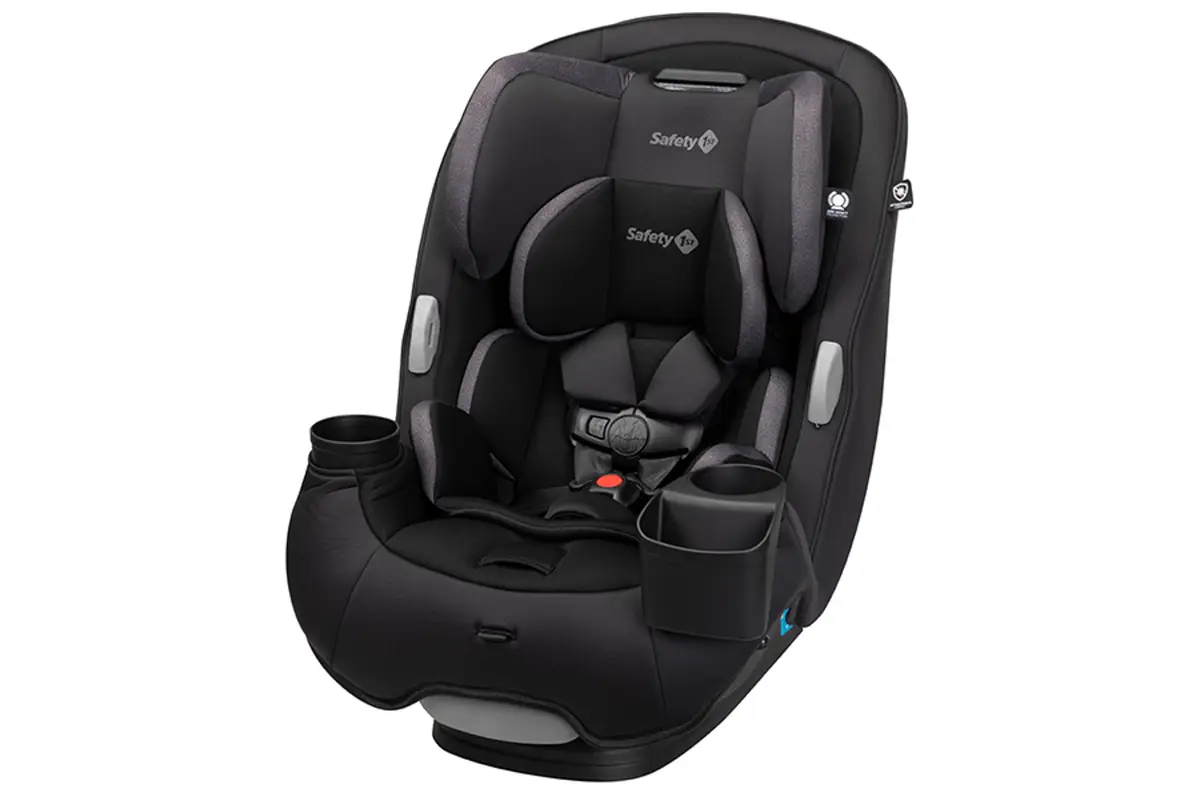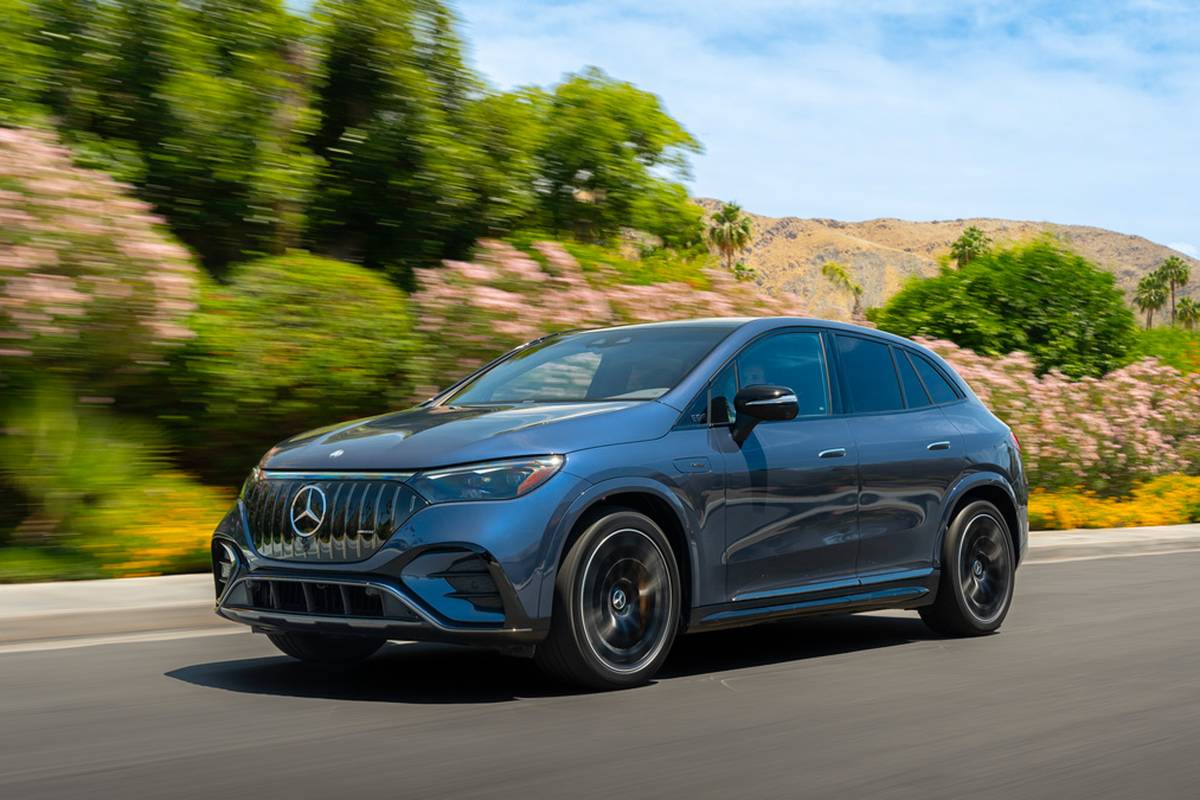2024 Chevrolet Traverse Review: Smooth Sailing, On-Road or Off

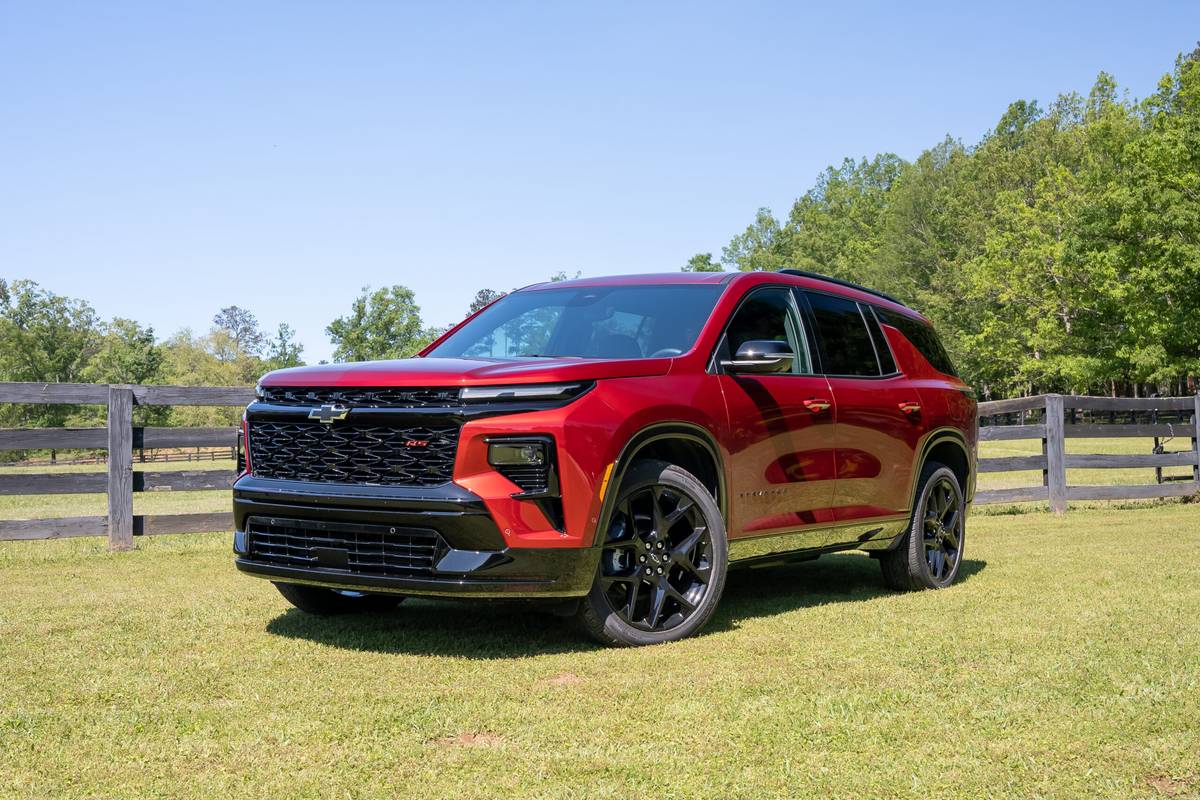
The verdict: The redesigned 2024 Traverse is a stylish, solid update to Chevrolet’s popular big family SUV, now with legit off-road chops and some snazzy new tech.
Versus the competition: Interior materials quality still plays second fiddle to segment leaders, but slick and smoothly functioning onboard tech surpasses a lot of competitors, as does segment-best ride quality.
Chevrolet’s big three-row SUV, the Traverse, is now in its third generation, receiving a thorough redo for the 2024 model year that’s brought a complete reworking of the SUV from the inside out. There’s new styling, a new interior, a new powertrain, new safety technology, a new multimedia system and even a new off-road trim level, which seems to be a requirement these days for any automaker with a three-row SUV.
Related: Redesigned 2024 Chevrolet Traverse to Hit Dealers Starting at $38,995
Apparently, a lot of you like to go camping now and are insisting that your family wagon take you over the river and through the woods to get to your preferred destination in the hills. The new Traverse has you covered whether you’re up for adventure or just ferrying the kids to hockey practice, and we went to the outskirts of Atlanta, at Chevrolet’s invitation, to drive the 2024 Traverse over hills and down country two-lane highways to see what the changes have done to the SUV’s competitiveness. (Per Cars.com’s ethics policy, we pay for all travel and lodging at such manufacturer-sponsored events.)
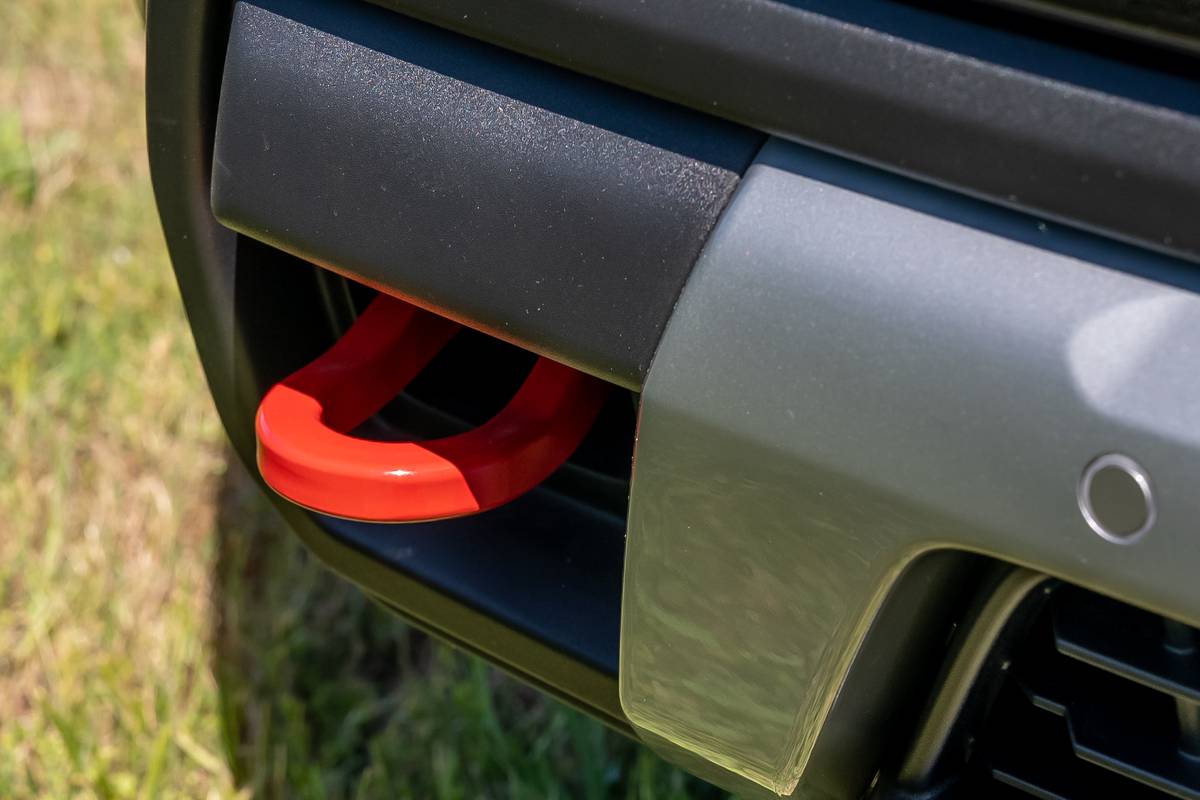
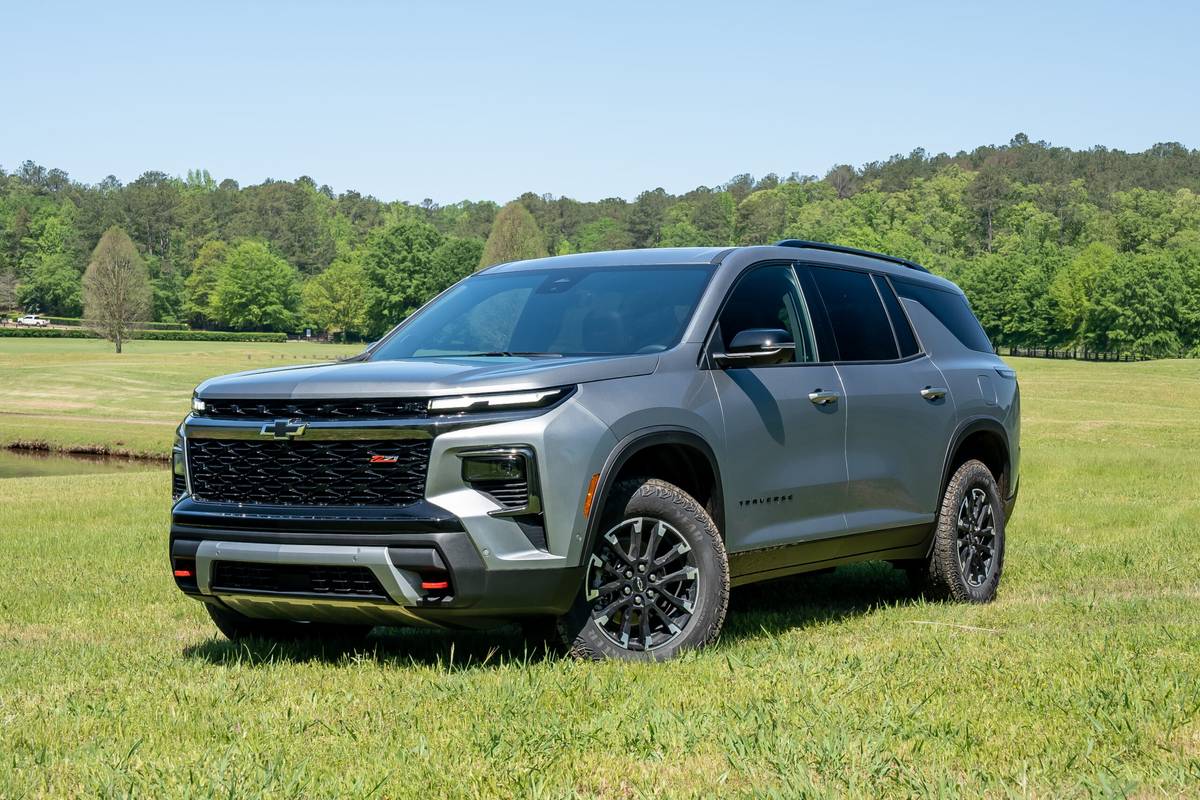
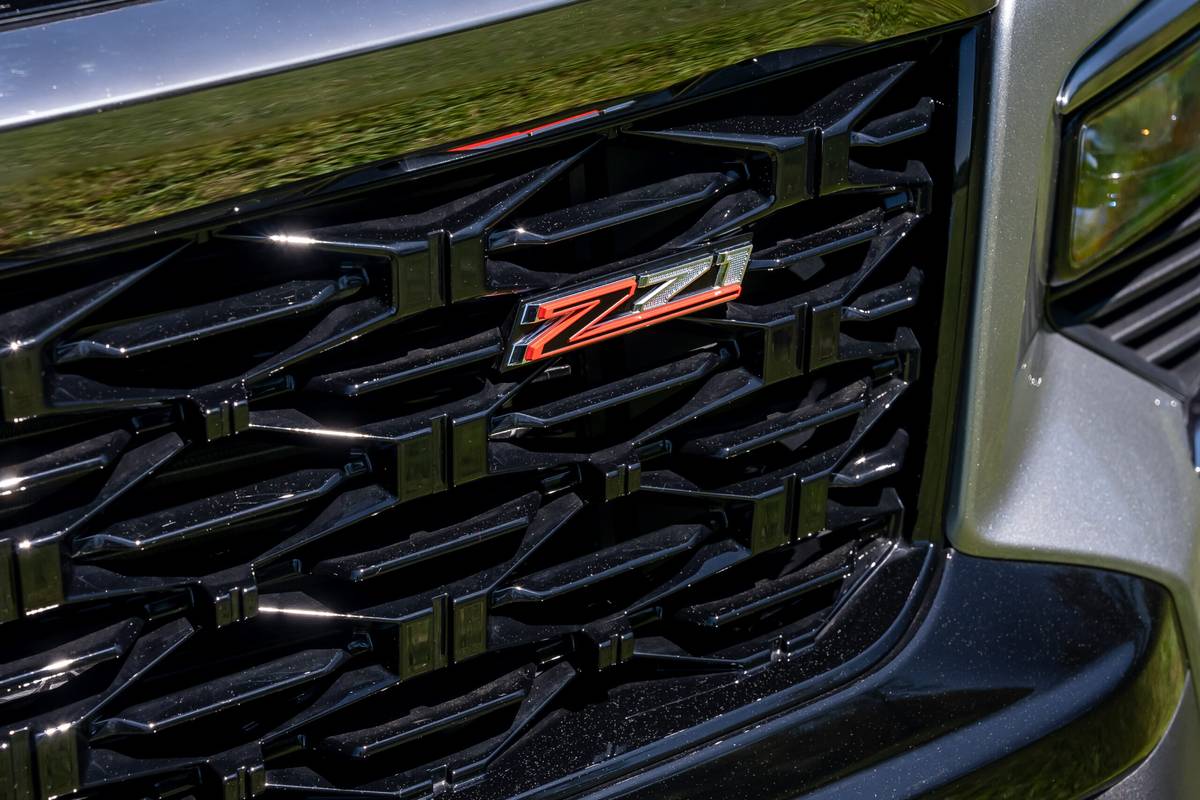
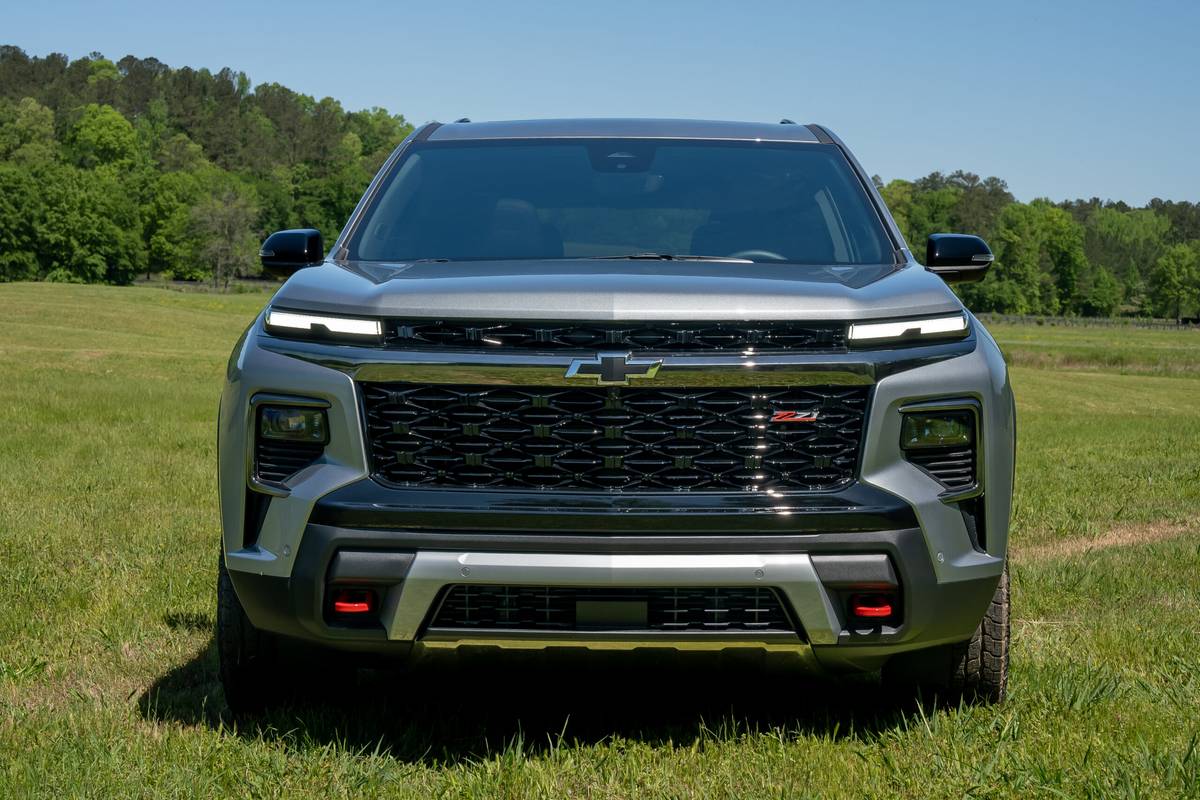
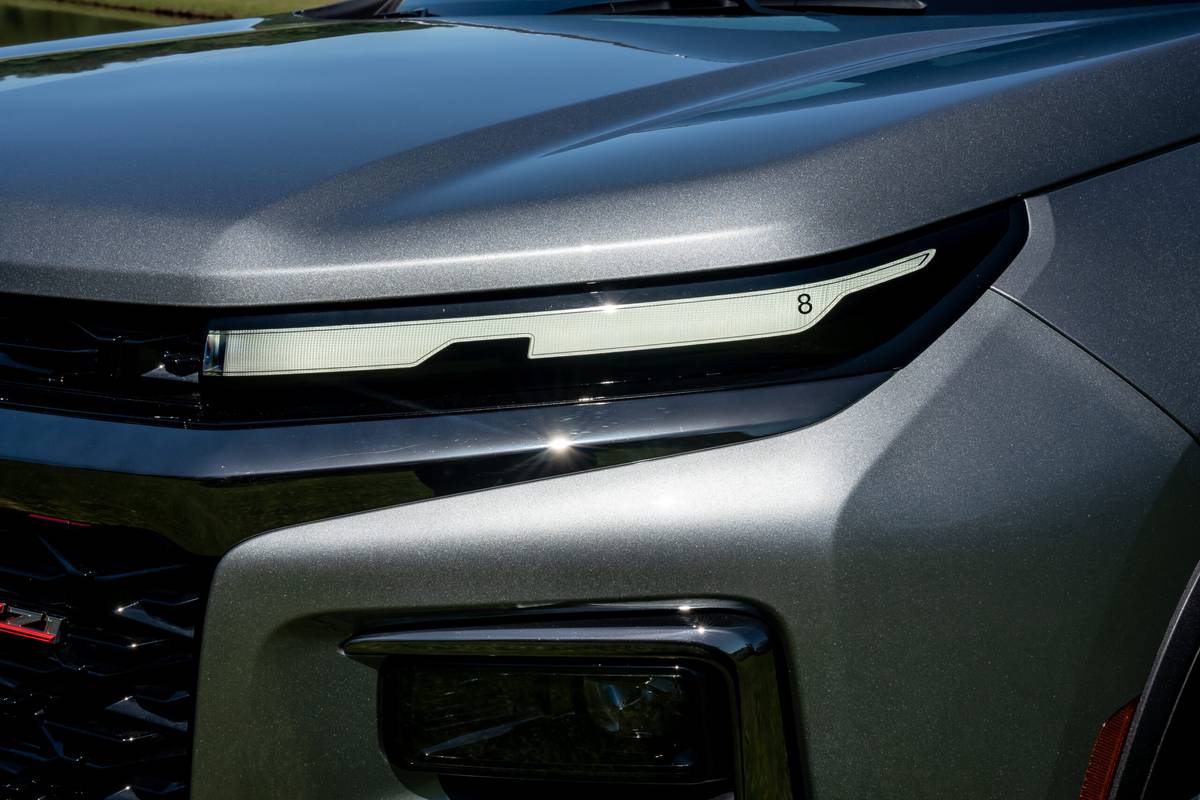

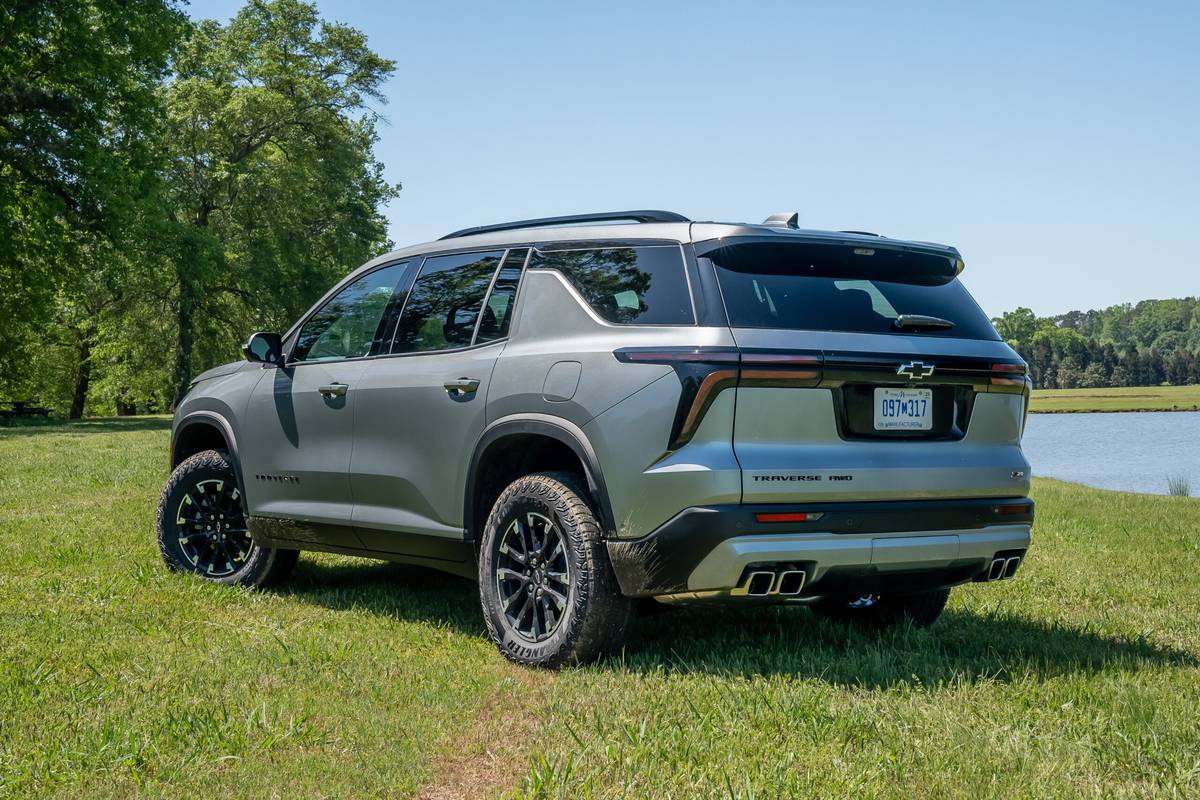
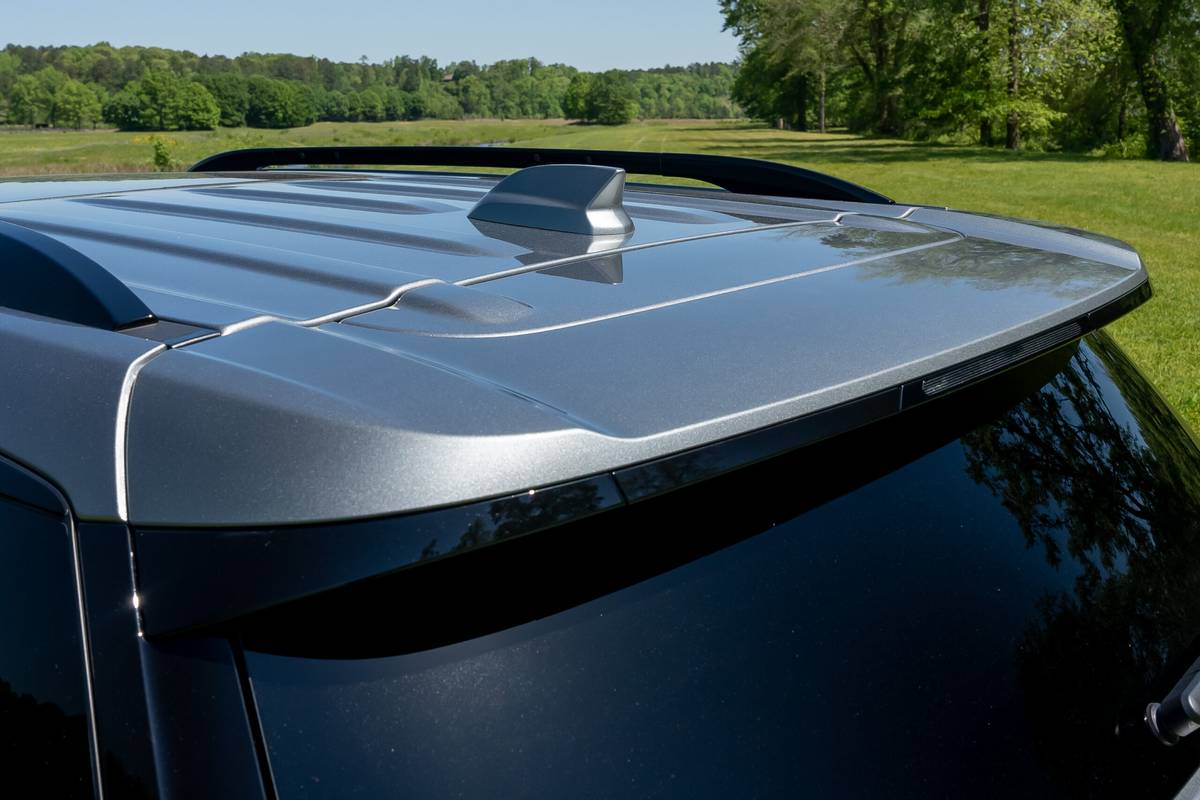

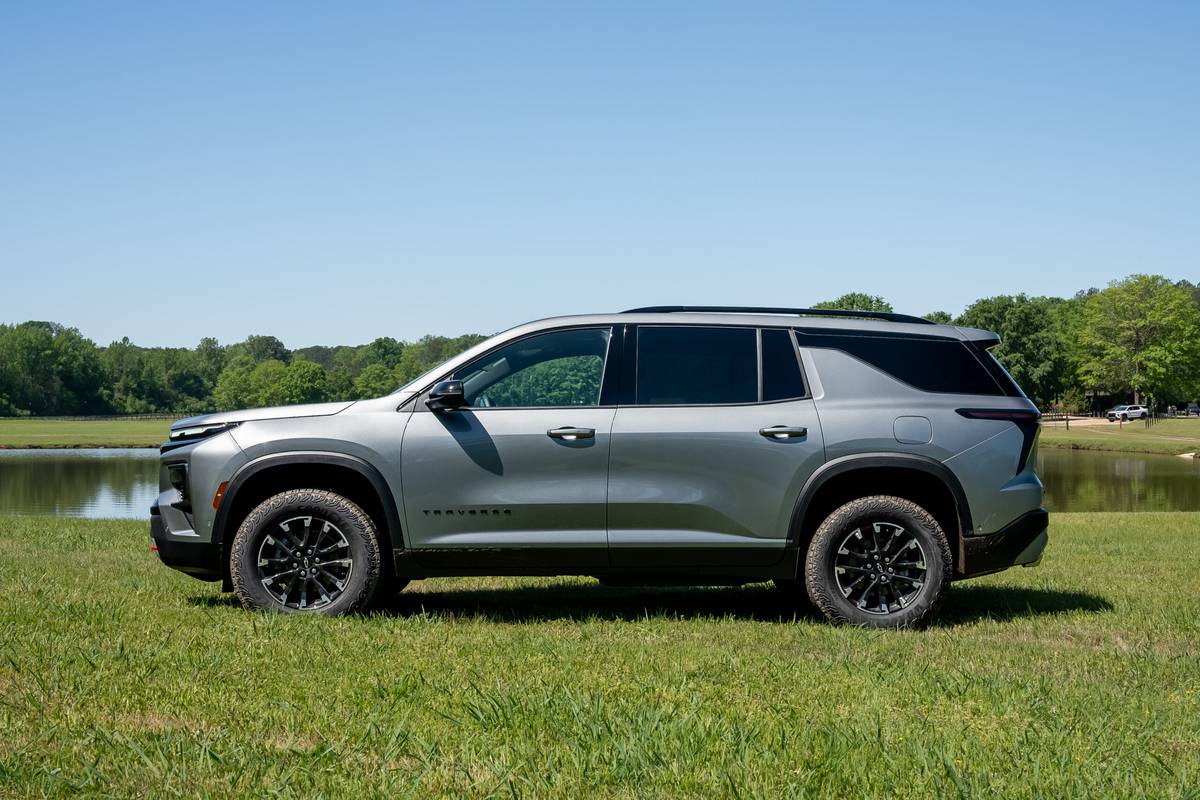
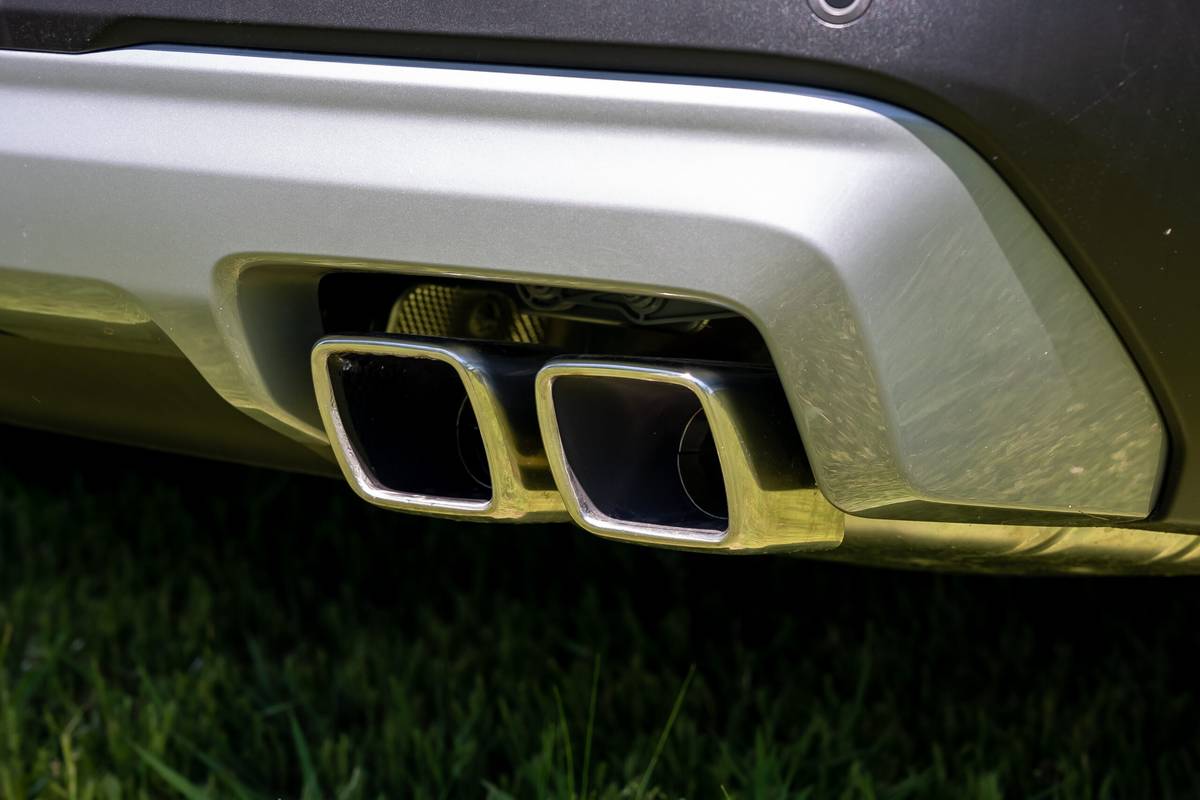

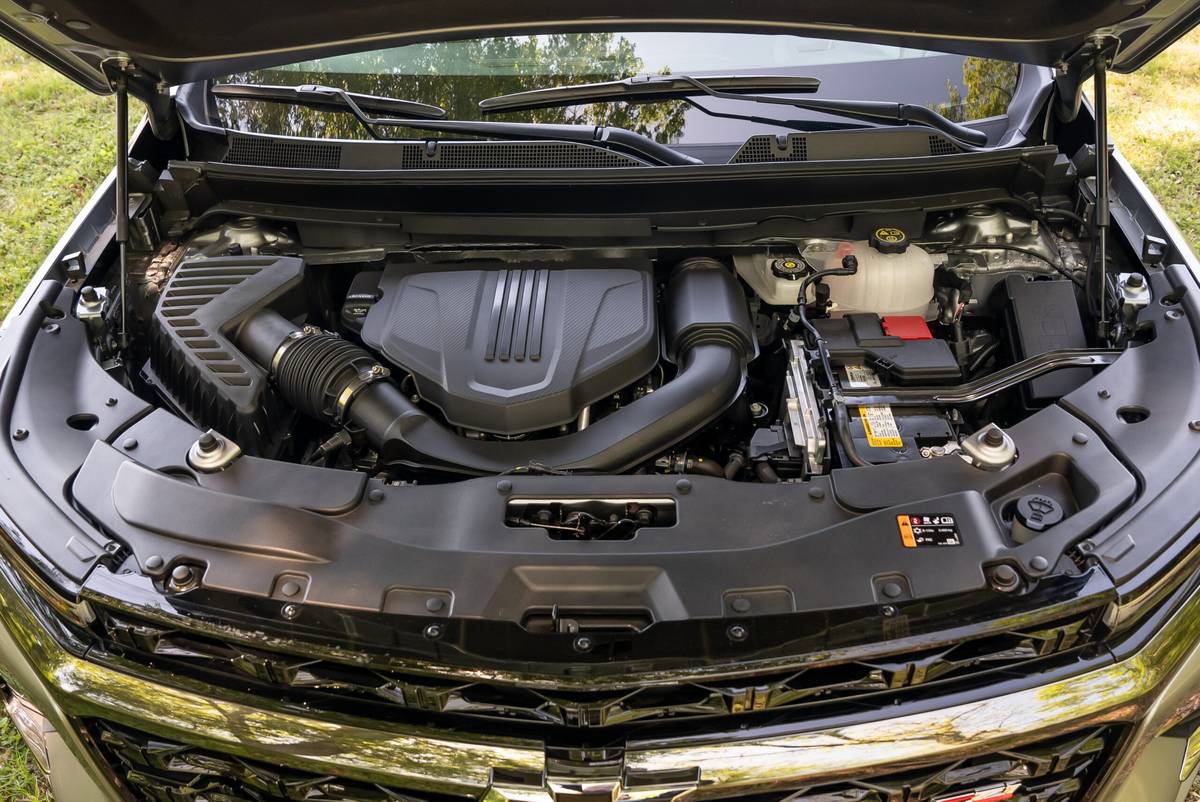
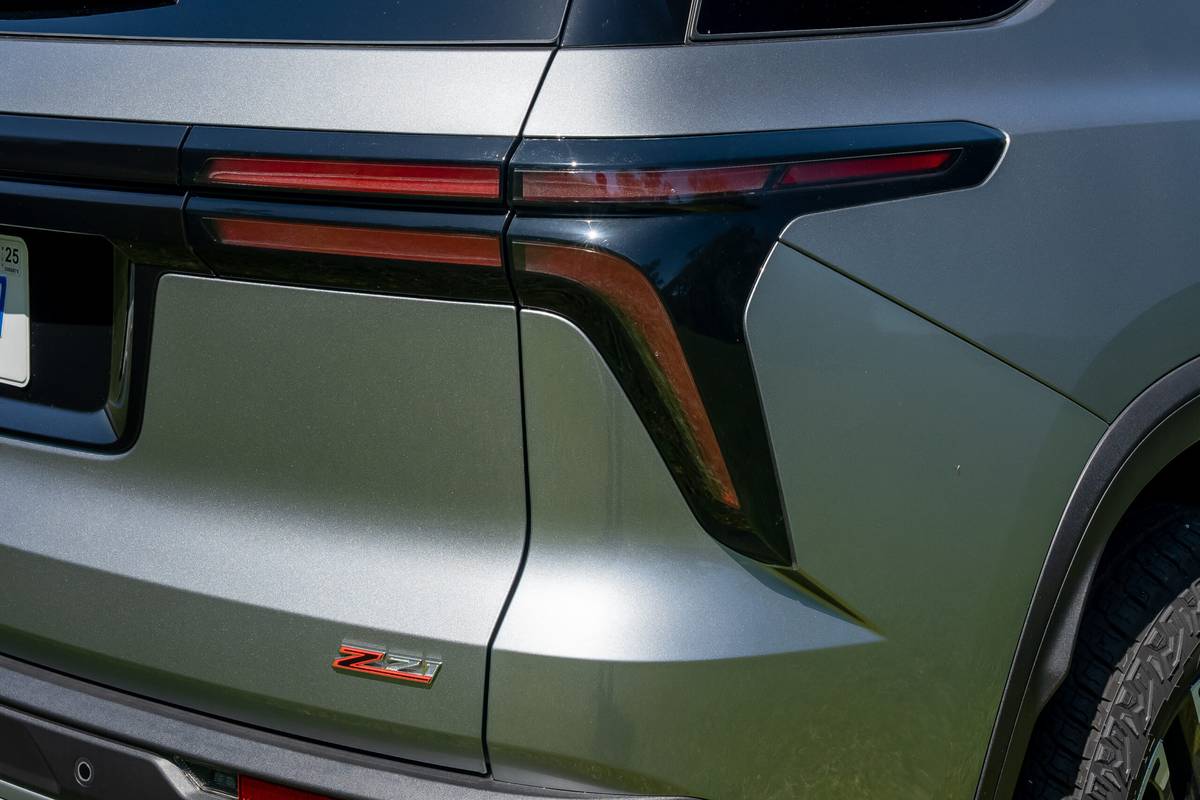
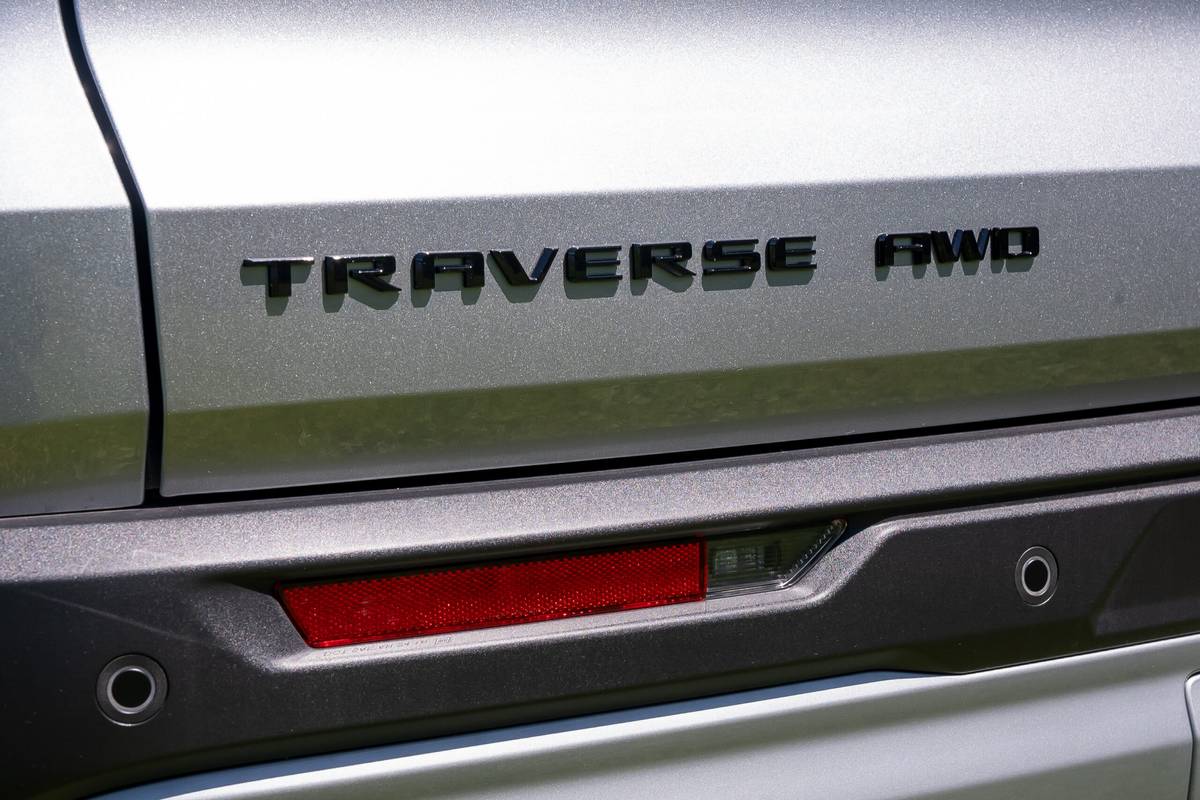
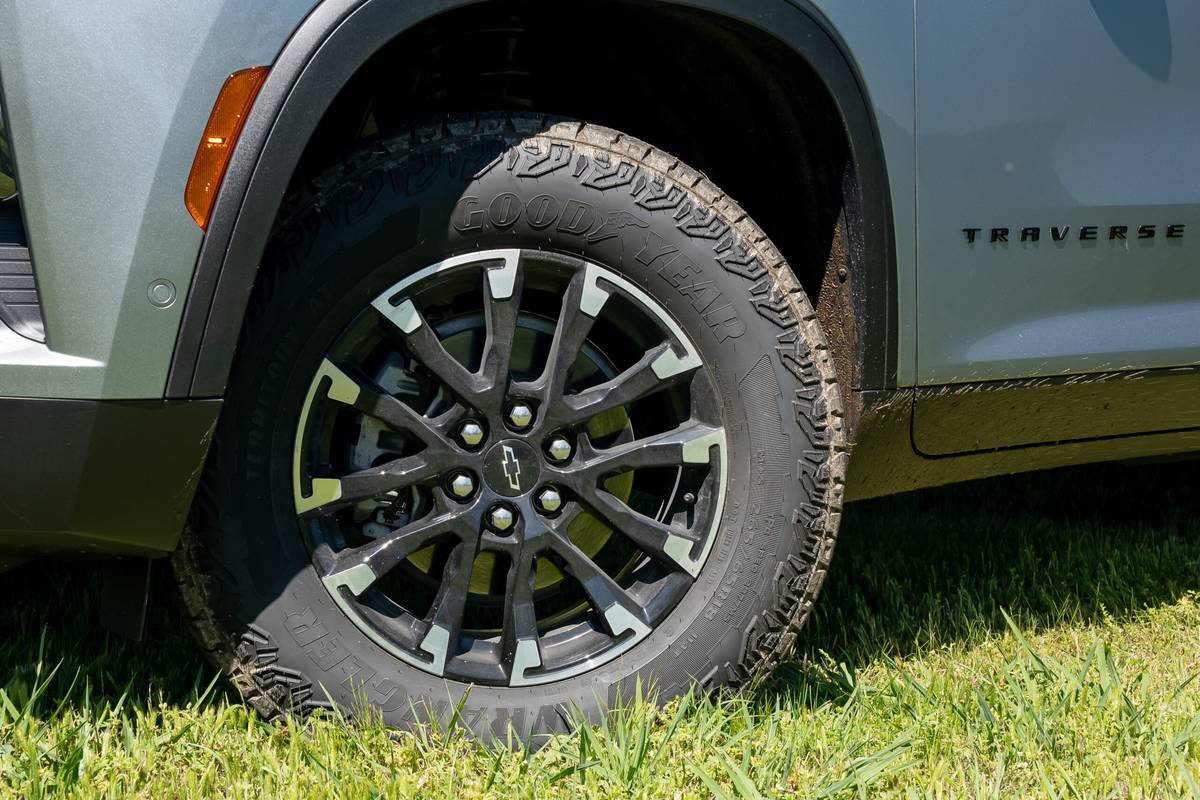
















A Choice of Flavors, But the Z71 Is Tastiest
There will be four trim levels available when the ‘24 Traverse starts arriving at dealers: LS, LT, Z71 and RS. We drove the Z71 and RS, which are the most notable trims, but not the expected highest-volume one (that would be the LT). The Z71 is all-new for the ‘24 model year, and it’s the first time Chevy has made an off-road-oriented version of the Traverse. It was expected, however, given the new trend of making three-row crossovers that look off-road-ready (see: Ford Explorer Timberline, Kia Telluride X-Pro, Nissan Pathfinder Rock Creek, Honda Pilot TrailSport, Volkswagen Atlas Peak Edition, etc.). Some of these quasi-off-roaders are more capable than others, and the Z71 trends toward the capable end of the spectrum, as its changes are more than just cosmetic.
Related Video:
It starts with an inch lift kit for better ground clearance, but also features a different front bumper with an integrated skid plate for better approach angle and underbody protection, respectively. The track is wider, too, thanks to a revised suspension and unique 18-inch Z71 wheels with Goodyear Wrangler Territory A/T all-terrain tires. The shock absorbers have been tuned specifically for smoother behavior off-road; there are Off-Road and Terrain modes that change things like throttle mapping and steering tuning; and the model has a unique twin-clutch all-wheel-drive system to optimize off-road traction that’s different from other Traverses.
It all works unexpectedly, exceptionally well. While my off-road stint wasn’t what most off-road SUVs would find challenging, it was indeed representative of what most owners would do with their Traverse Z71 — crossing mown fields; climbing slippery, muddy, loose-gravel inclines through forest trails; and bouncing down washboard dirt roads at moderate speeds. It’s here you realize the biggest positive about the new ‘24 Traverse is its ride quality — it is astonishingly good over any kind of terrain. Bumpy, rutted field at 40 mph? Nothing jarring or unpleasant gets into the cabin. Washboard dirt? Potholes the size of surfboards? Take ‘em on, the Traverse just eats it up without once making anyone in the cabin wince. It’s smooth sailing whether you’re on the Z71’s chonky off-road rubber or the RS trim’s big 22-inch wheels and much lower profile tires. It’s quite clear that NVH (to use an industry term for “noise, vibration and harshness”) was a key target for improvement for the 2024 model year, and Chevy has triumphed here.
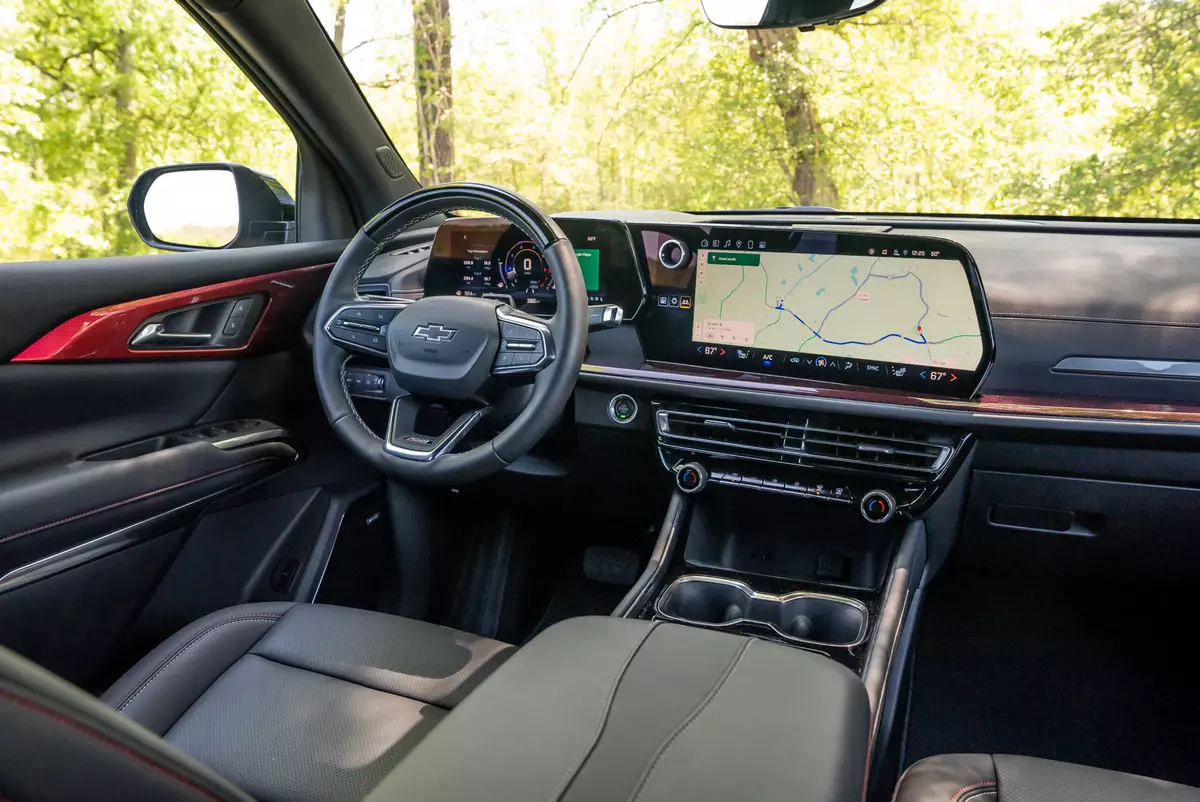
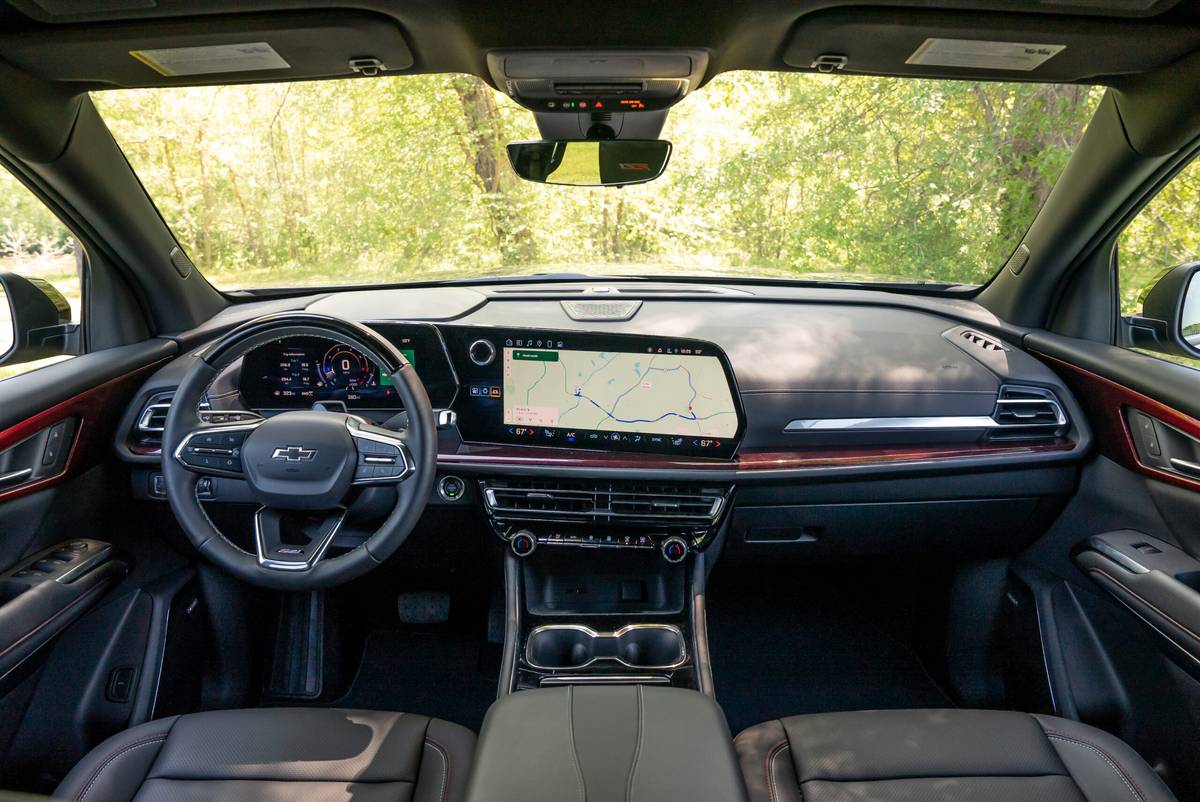
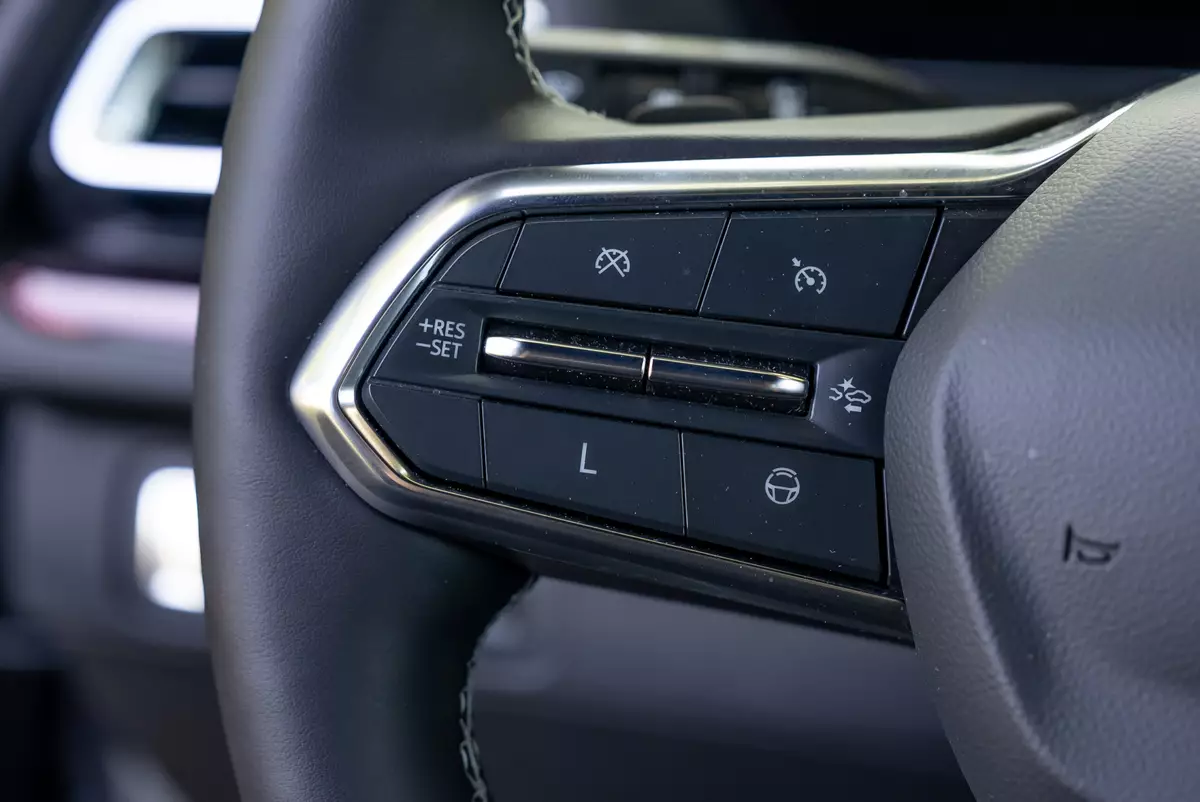

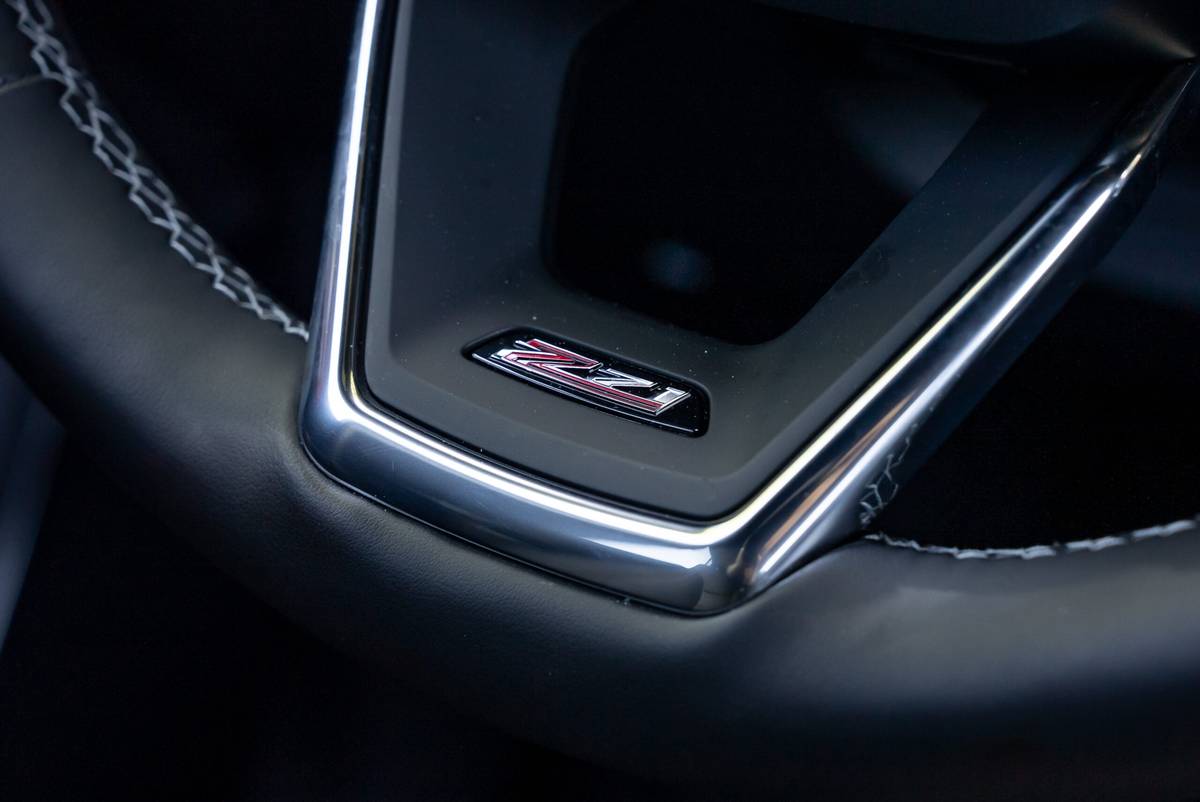


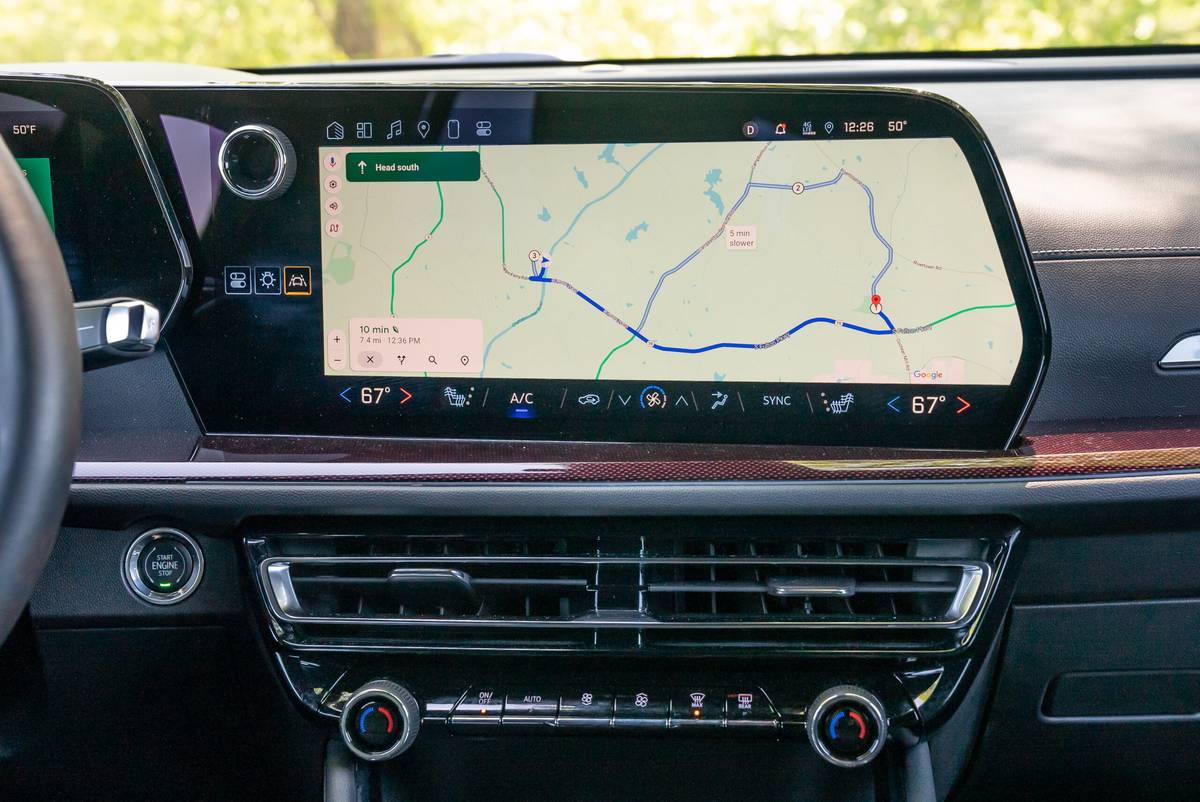

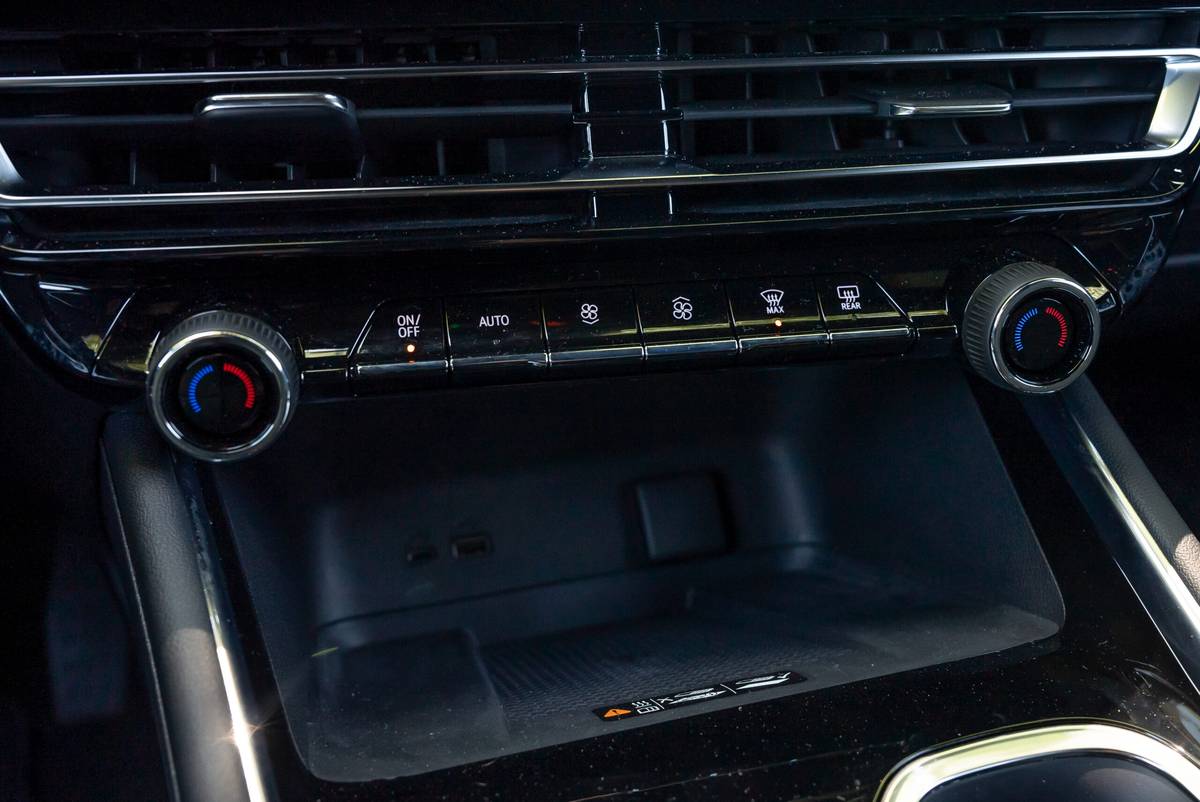
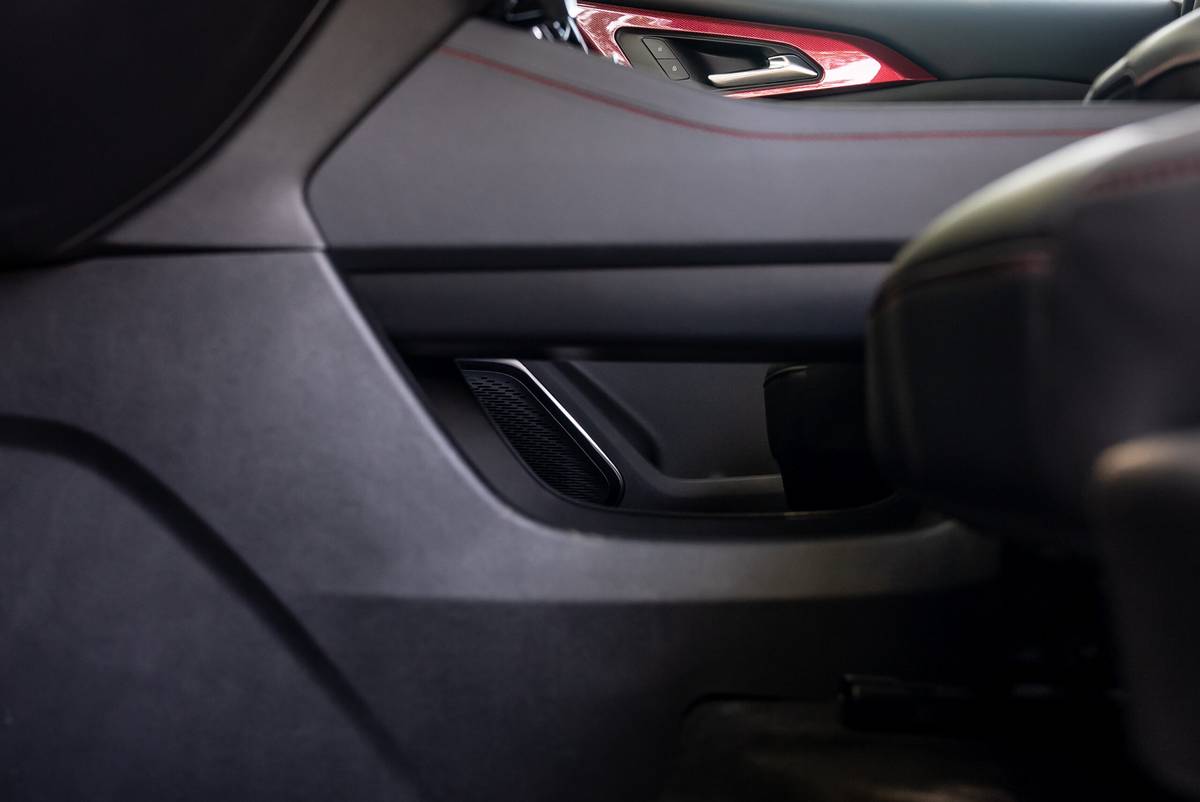

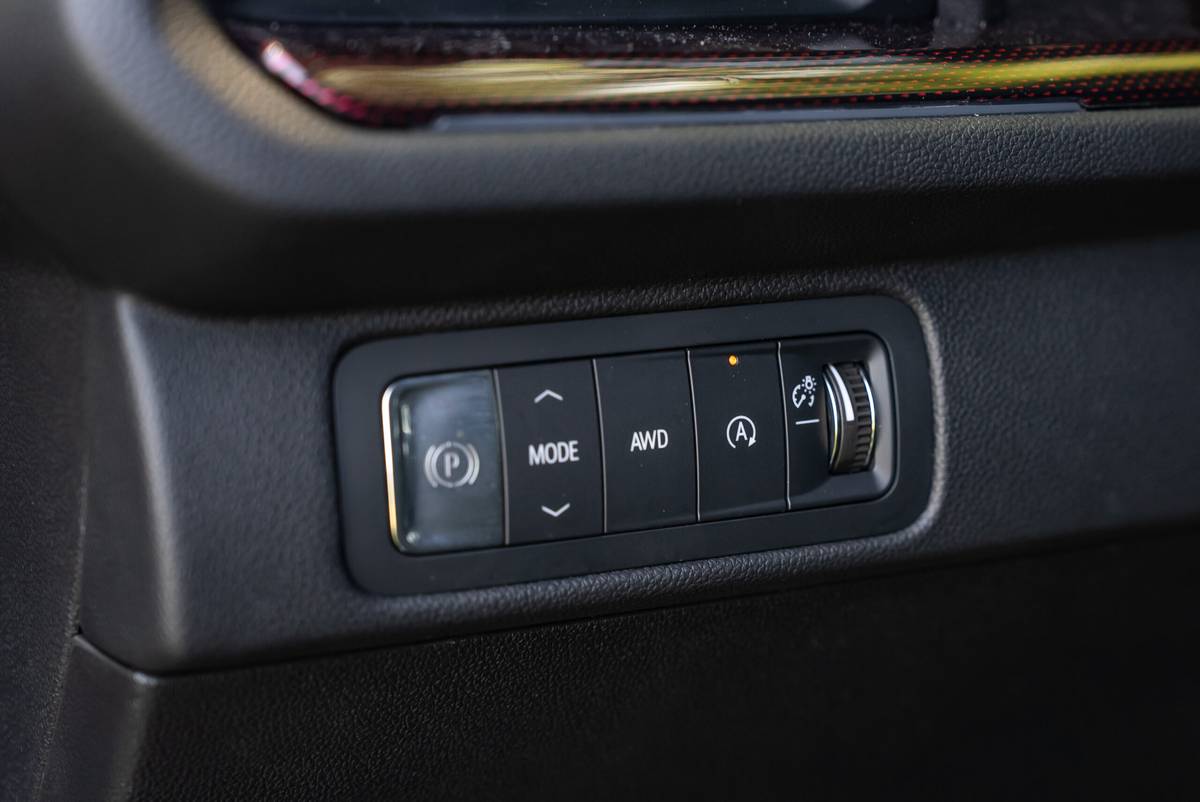
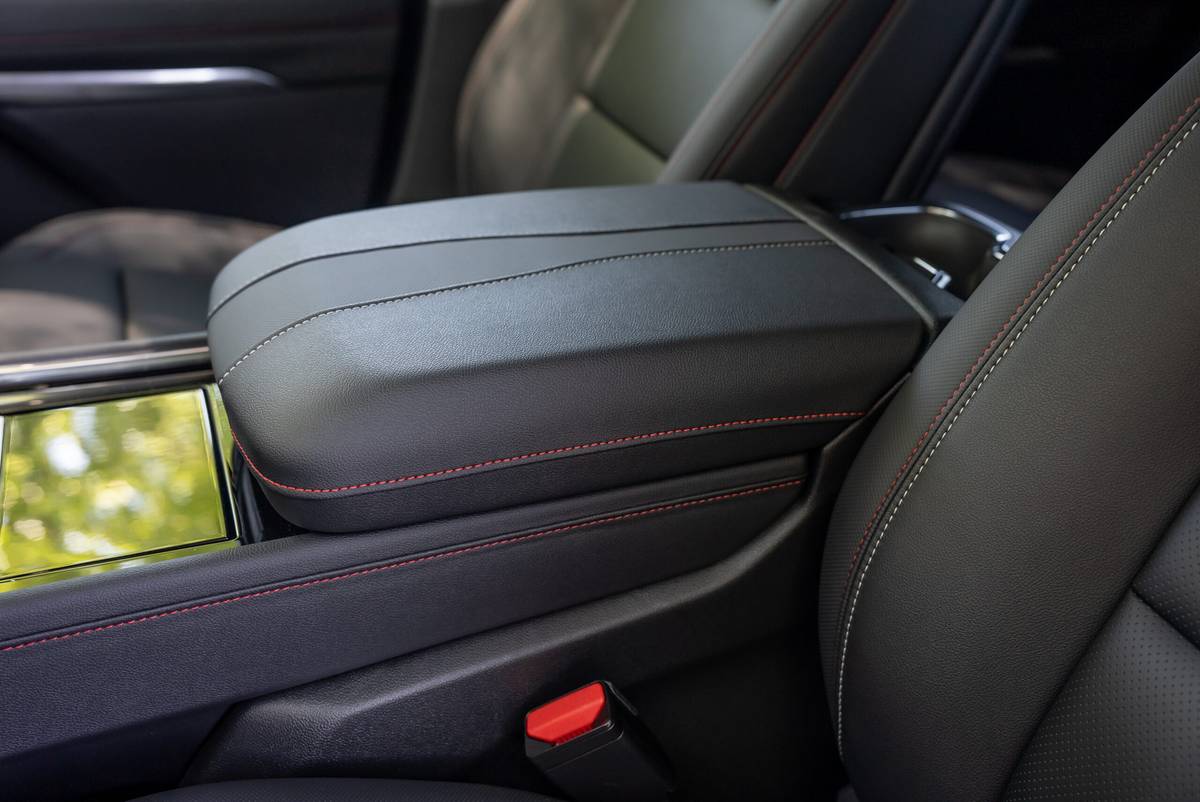


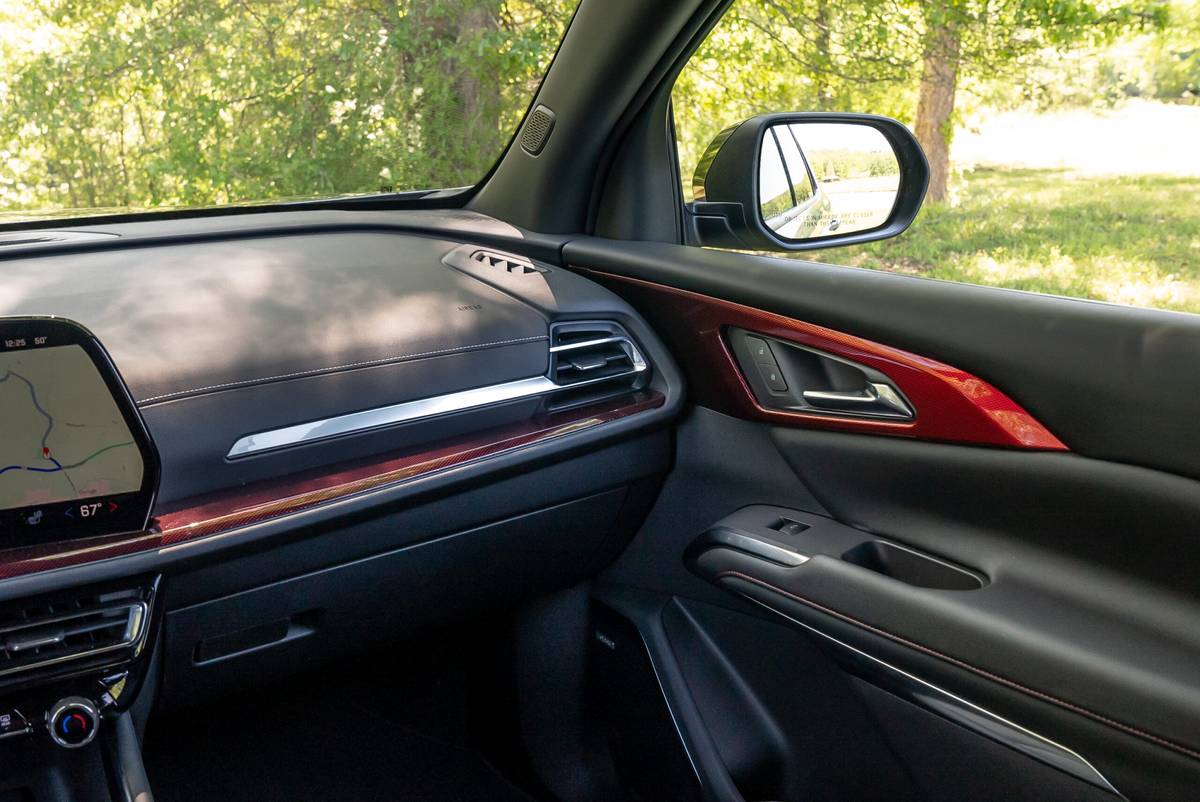
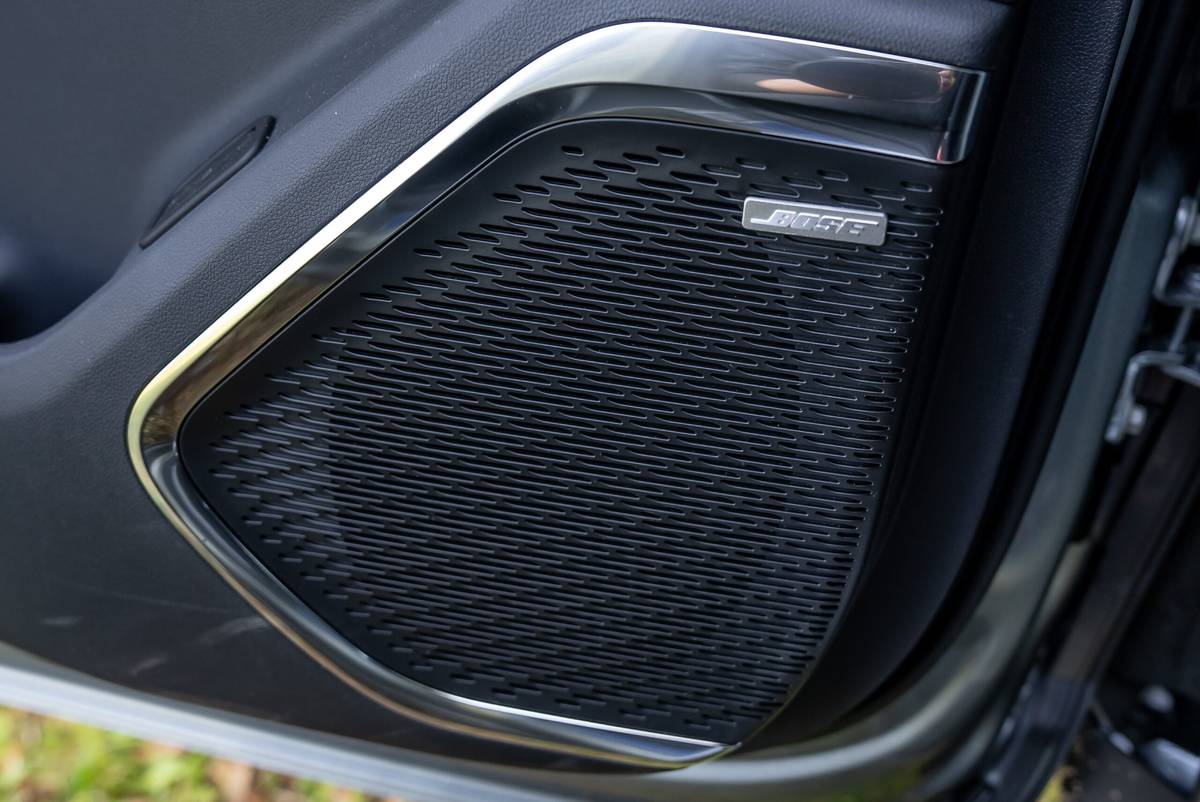






















RS if You Feel the Need for (Looking Like) Speed
On the road, the Z71 does have a bit more road noise thanks to those chunky tires, but it still handles well and is predictable and steady. Switching to the top RS trim, with its sport-tuned suspension and much more on-road-oriented tires, and you’re still treated to a quiet, impossibly smooth ride. The RS handles well, with relatively little body lean and responsive steering that works decently on sweeping two-lanes, but it’s not a sports car, and it’s not asking to be driven like one. Its role as a family hauler is still paramount, and its fairly slow-ratio steering and propensity to understeer drive that impression home.
One of its few foibles — a vague lightness in on-center steering feel — also makes itself known at speeds above 55 mph. It almost feels as if the front end is experiencing aerodynamic lift, unloading the front suspension and making the steering feel a little uncertain and shifty; it’s not a confident, straight-tracking feeling at highway speeds, and that detracts from the sense of solidity the rest of the SUV delivers. To put it more simply, the Traverse handles well and rides beautifully, but it doesn’t track as straight and true as expected for some reason.
All versions of the Traverse share a new powertrain: a turbocharged 2.5-liter four-cylinder engine making 328 horsepower and 326 pounds-feet of torque that replaces the old 3.6-liter V-6. It’s mated to an eight-speed automatic transmission driving the front wheels, with AWD an option on all trim levels but the Z71, where it’s standard. That AWD is selectable, too, so you can deactivate it if you don’t really need it given the terrain and conditions, and it will also automatically engage depending on the selected drive mode.
The new engine is … adequate. It’s fairly coarse-sounding, and that doesn’t really fit the demeanor of the SUV; it sounds like a tractor engine or something you’d find in a smaller, lesser SUV and not the $56,000 one you’re piloting. Acceleration is also adequate and not quick enough to be considered “entertaining” — again, not in keeping with the RS trim’s sporty looks. It doesn’t quite feel like it’s putting out 328 hp, and it runs out of steam at higher engine rpm and on hard acceleration from a standing start. But if there’s one thing we’ve learned from GM in recent years, it’s that its buyers don’t really seem to care what’s under the hood as long as it drives reasonably well, gets decent gas mileage and does what’s asked of it. The new turbo four-cylinder in the Traverse does all of those things, so for most people, it’ll do just fine — but it can’t really touch the sprightly attitude and punchy force of the ‘24 Atlas’ new turbo four-cylinder, which remains the benchmark for entertaining powertrains in this class.

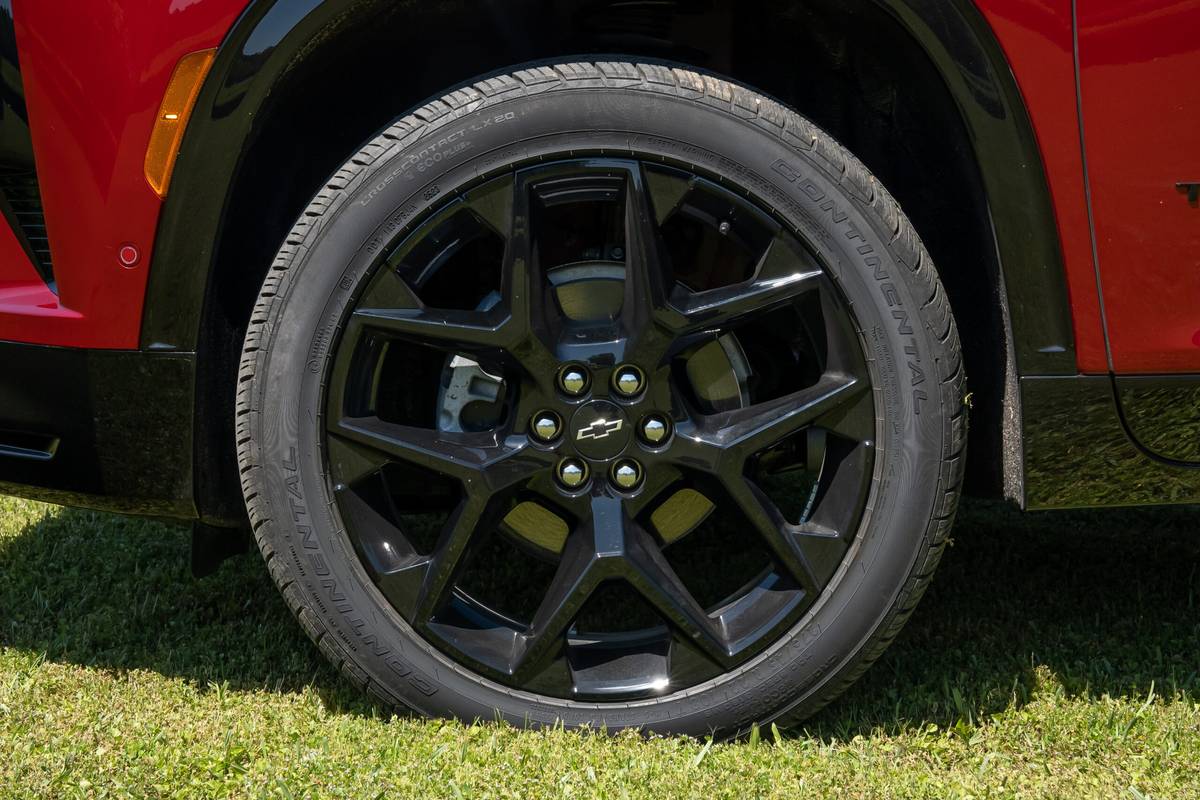
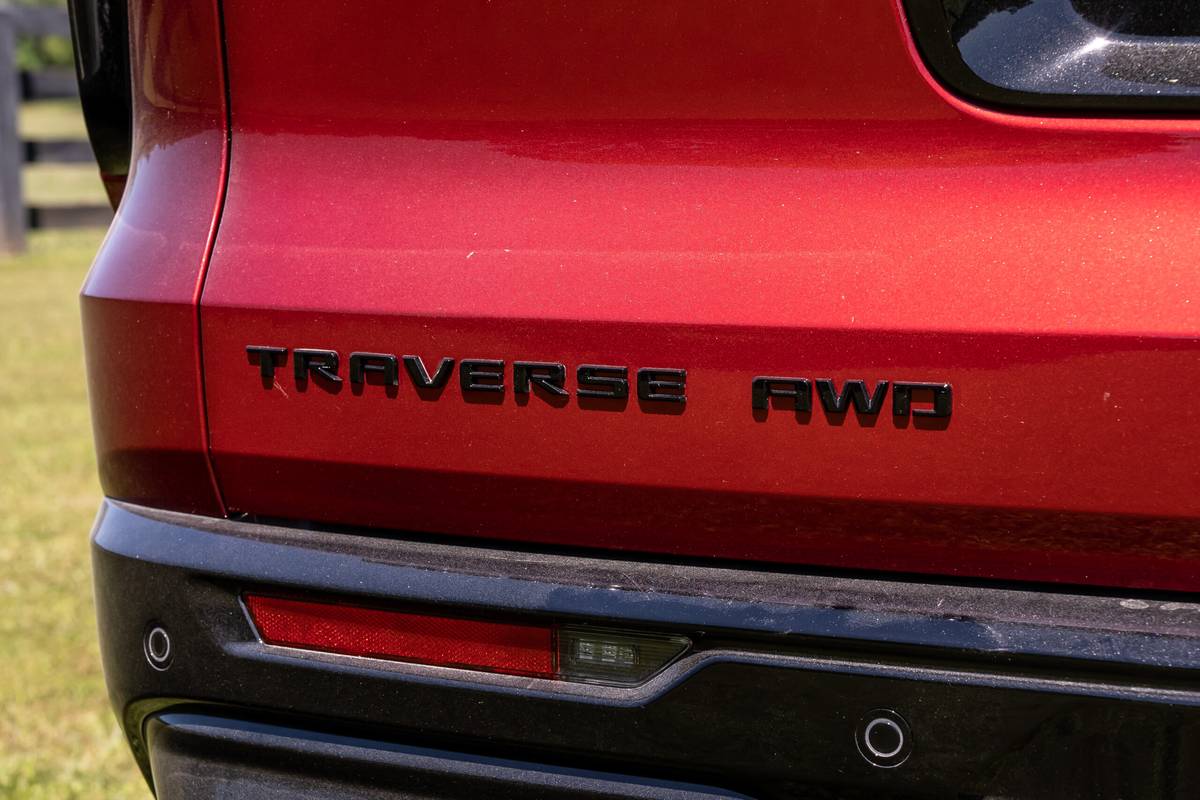

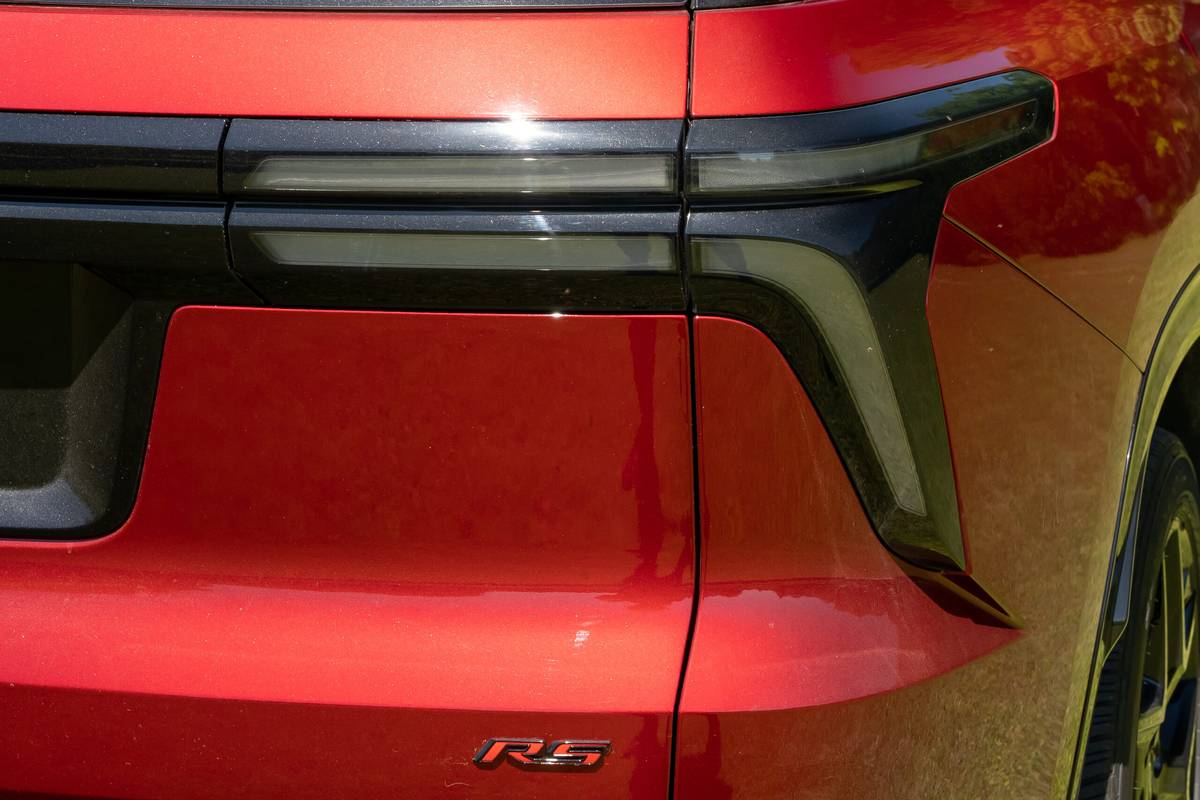
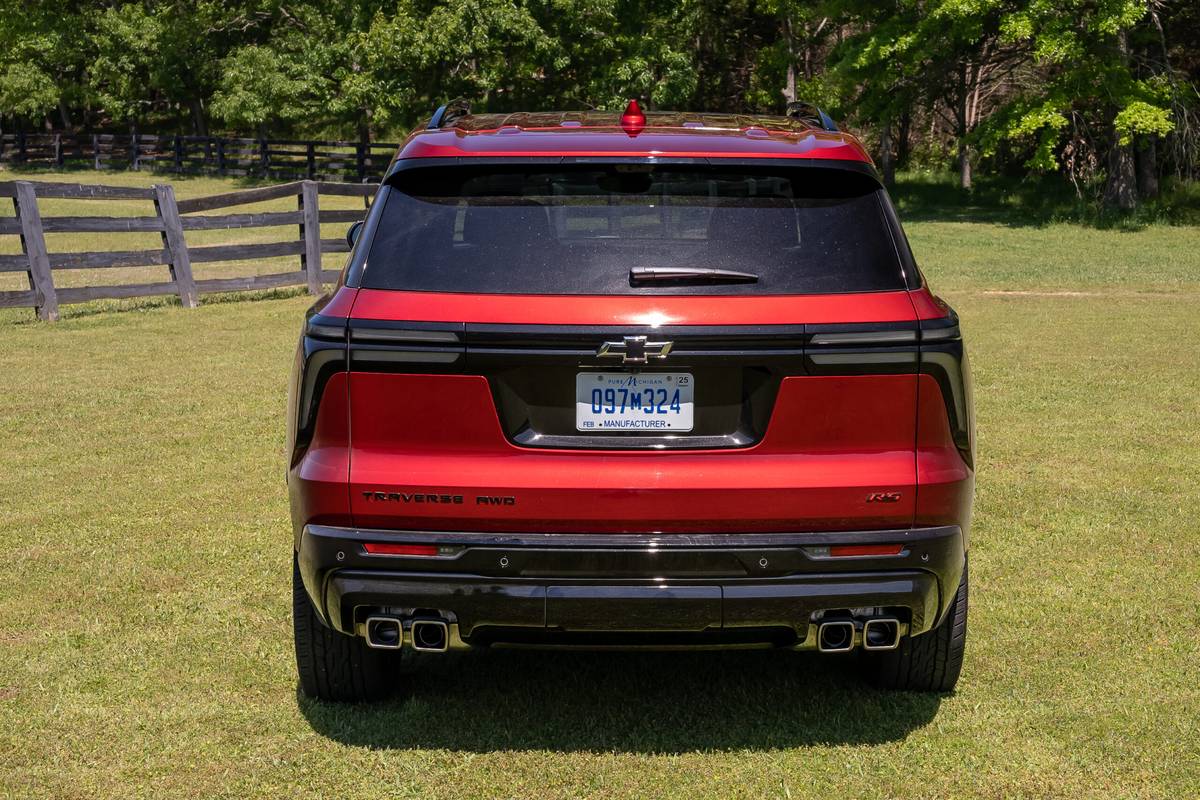


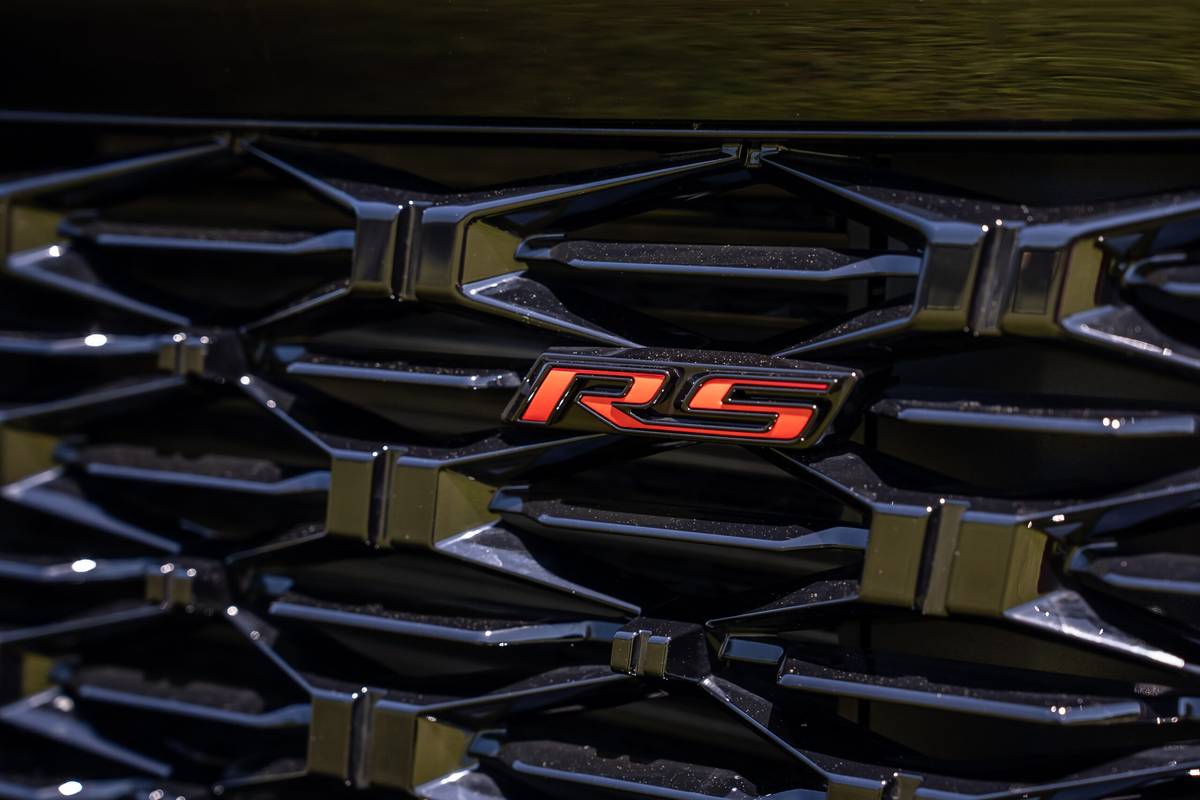
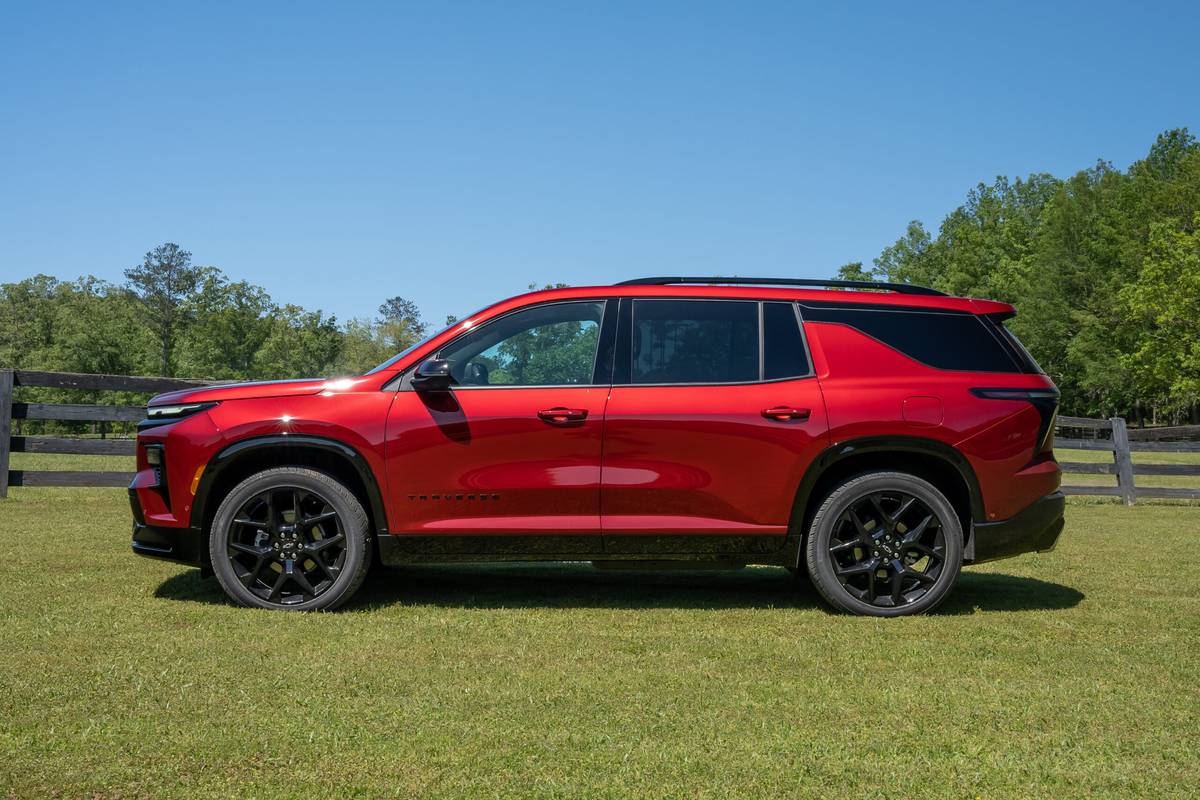
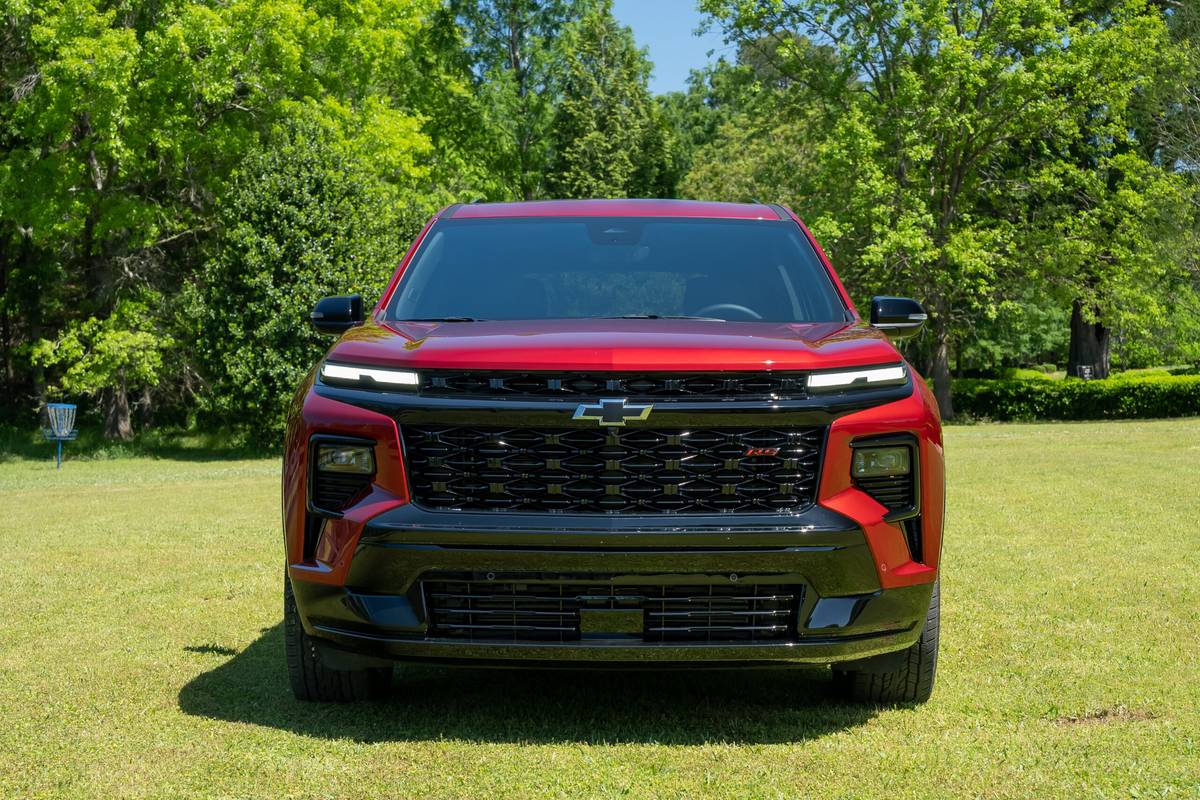
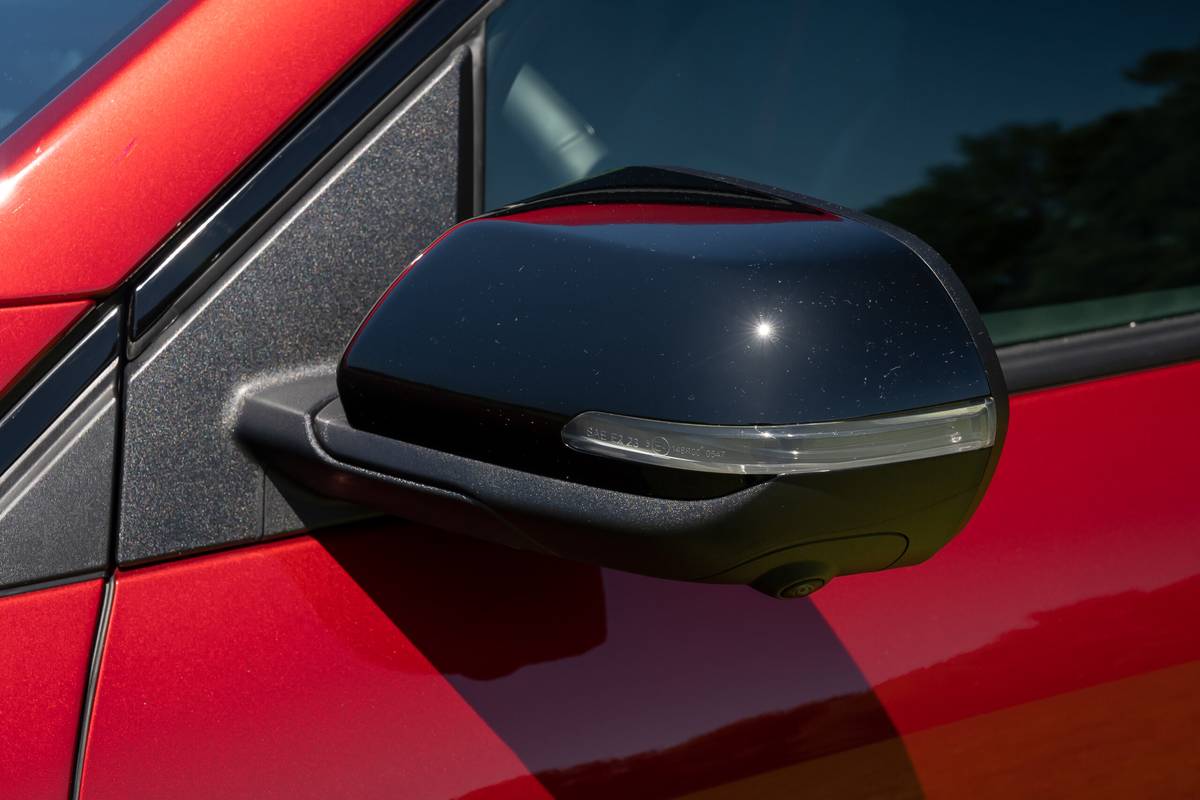














Does 3-Row Things, Does Them Well
So that’s how it drives, but how is it to use? Better than ever, frankly, thanks to significant upgrades in technology and interior equipment. I’ll start with the tech, which gets an upgrade in terms of screens alone with a new 11-inch digital instrument cluster that replaces traditional gauges. It’s big, bright and easy to read (unlike the digital instrument display in some Toyotas), and it can be reconfigured a number of different ways depending on your information requirements. To the right of that is a standard 17.7-inch touchscreen, a massive display that runs a new Google operating system. It’s quick and easy to navigate, and thankfully, there are still hard buttons and knobs below the screen for frequently used climate functions.
The gear selector has moved to a column-mounted stalk-type design, which is where, if we’re being honest, it probably should’ve stayed rather than moving all over the interior since the cars and trucks of the 1980s. The shifter is easy to use, frees up center console space for storage and cupholders, and doesn’t require much thought to use — just how a shifter should be.
Materials quality in both the Z71 and RS trims is decent but not class-leading. There’s plenty of soft-touch materials on the dash, doors and console, and it’s all screwed together quite well. But the shiny red faux carbon-fiber panels on the dash and doors look cheap; compare the RS’ interior to that of the similarly priced Hyundai Palisade Calligraphy Night Edition and it’s simply not as luxurious, though it does best the offerings from Toyota, Subaru and Honda. If you want a nicer interior in a big GM three-row SUV, you should probably wait for the upcoming 2025 Buick Enclave, which has a positively stunning cabin.
What the Traverse does well is comfort — in any of the three rows of seats. It’s big in there, with adults able to use any row with ease. The RS features one-touch power-folding second rows for easy access to the wayback, but one of the most welcome changes is that both outboard second-row seats now tilt and slide to allow access to the third row. There’s plenty of hip and shoulder space, decent legroom in the second and third rows, and while it still doesn’t feel quite as cavernous as a new Atlas, it’s better than just about anything else in the class for fully loaded comfort.
More From Cars.com:
- Up Close With the 2024 Chevrolet Traverse: Catching Up and Catching a Z
- 2024 Chevrolet Traverse: Now With More SUVness
- Auto Show Faceoff: 2024 Chevrolet Traverse Vs. 2025 Ford Explorer
- What’s New With SUVs for 2024?
- Shop for a 2024 Chevrolet Traverse
It’s also got safety covered, as you’d expect for a family vehicle. The list of standard safety equipment is extensive: It comes with the Chevy Safety Assist suite of features, as well as rear park assist, an HD backup camera, lane change alert and assist with blind spot warning, rear cross-traffic braking, reverse automatic braking, a 360-degree camera system, traffic sign recognition with speed limit assist, intersection automatic emergency braking, alerts for pedestrians and bicyclists, and more. Super Cruise, GM’s hands-free driving system, is also available, and it works as well here as it does in all other GM vehicles with the technology: dang-near flawlessly.
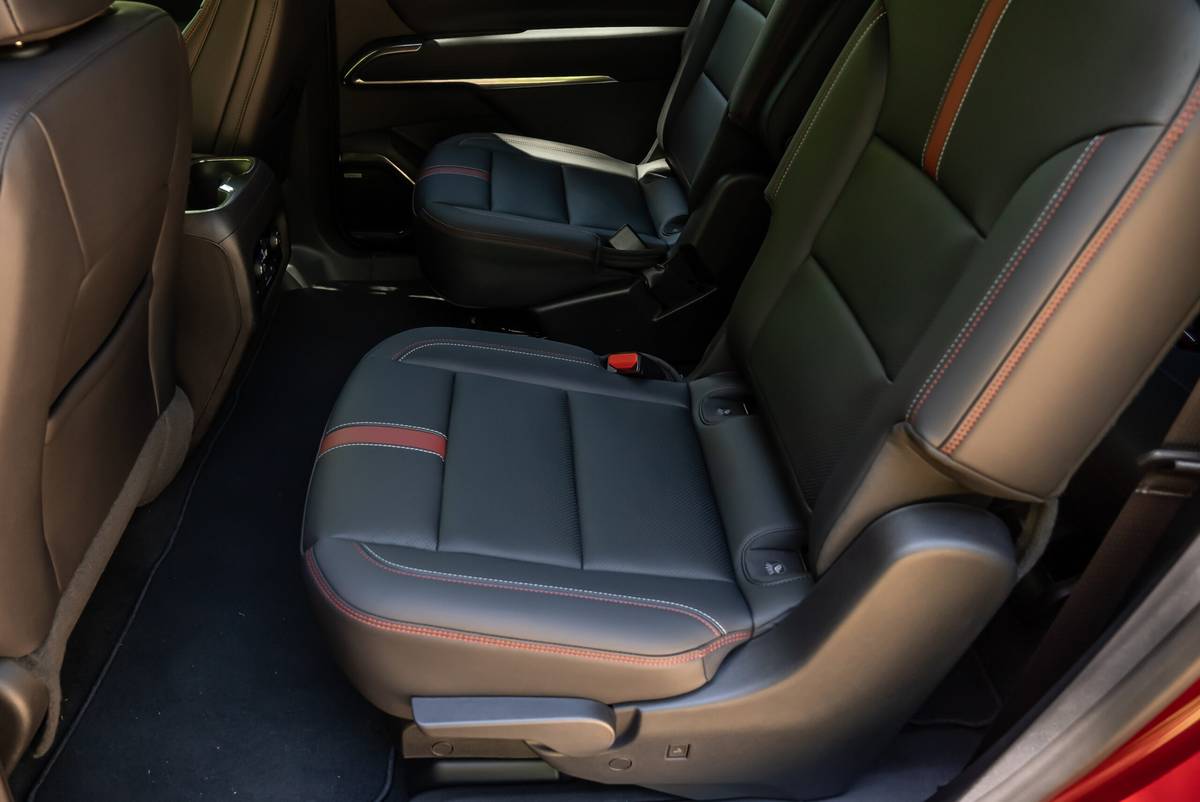
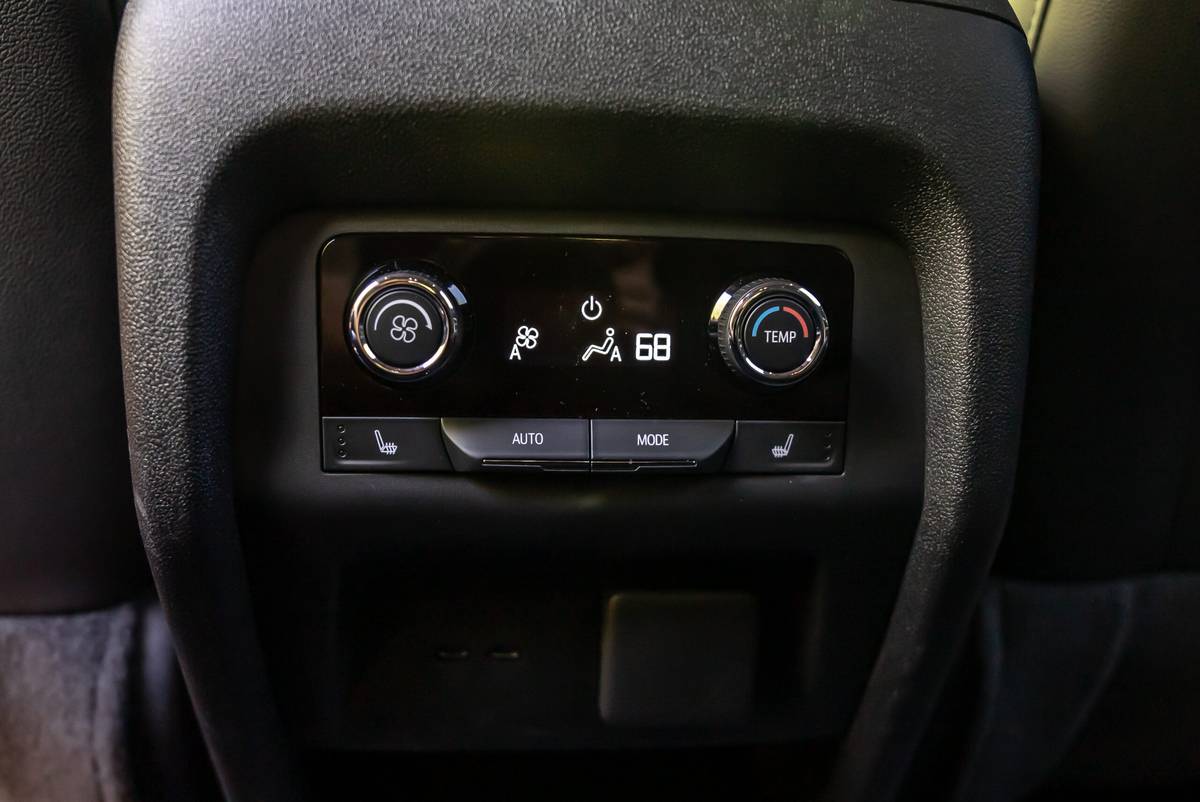
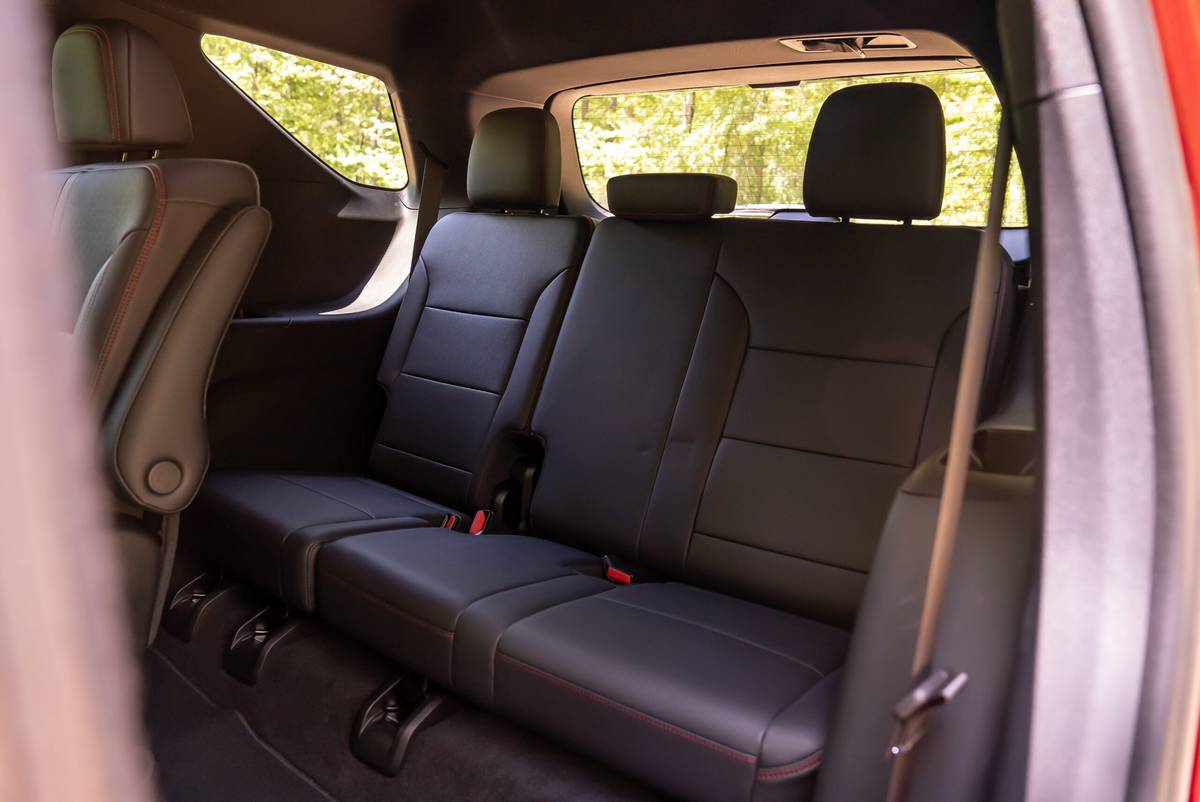



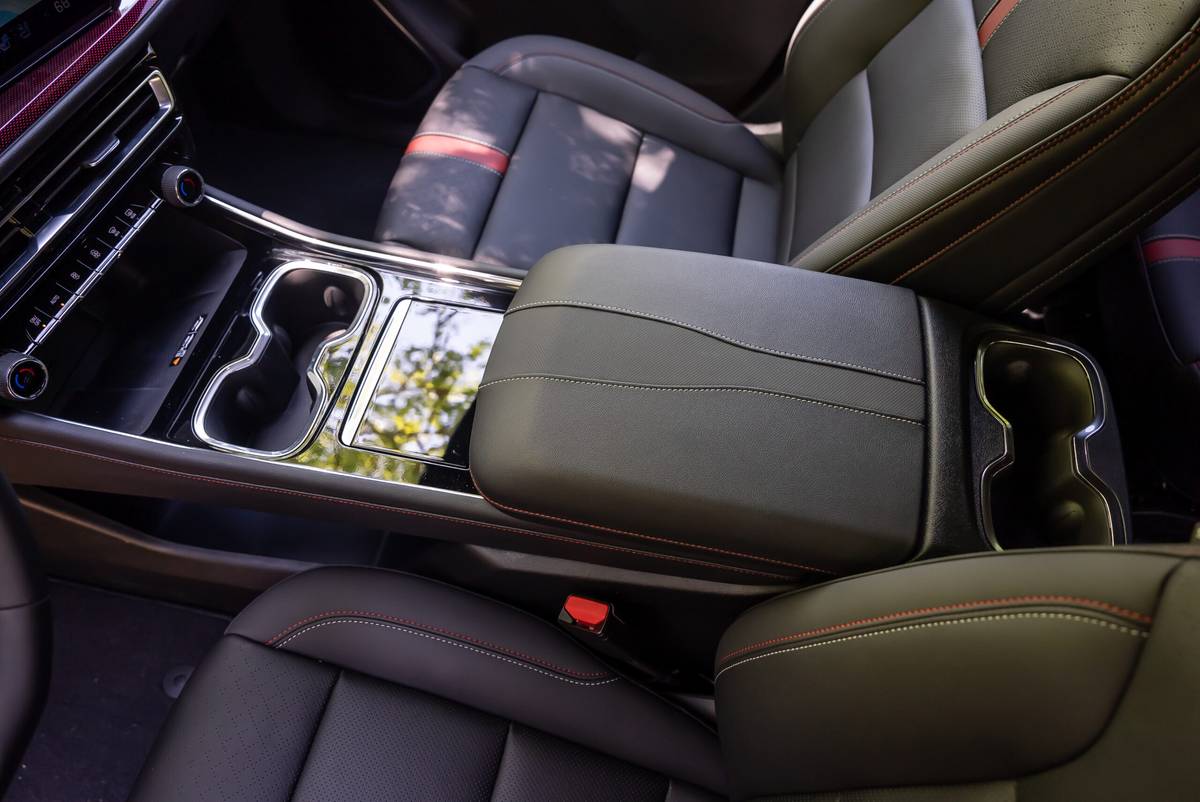
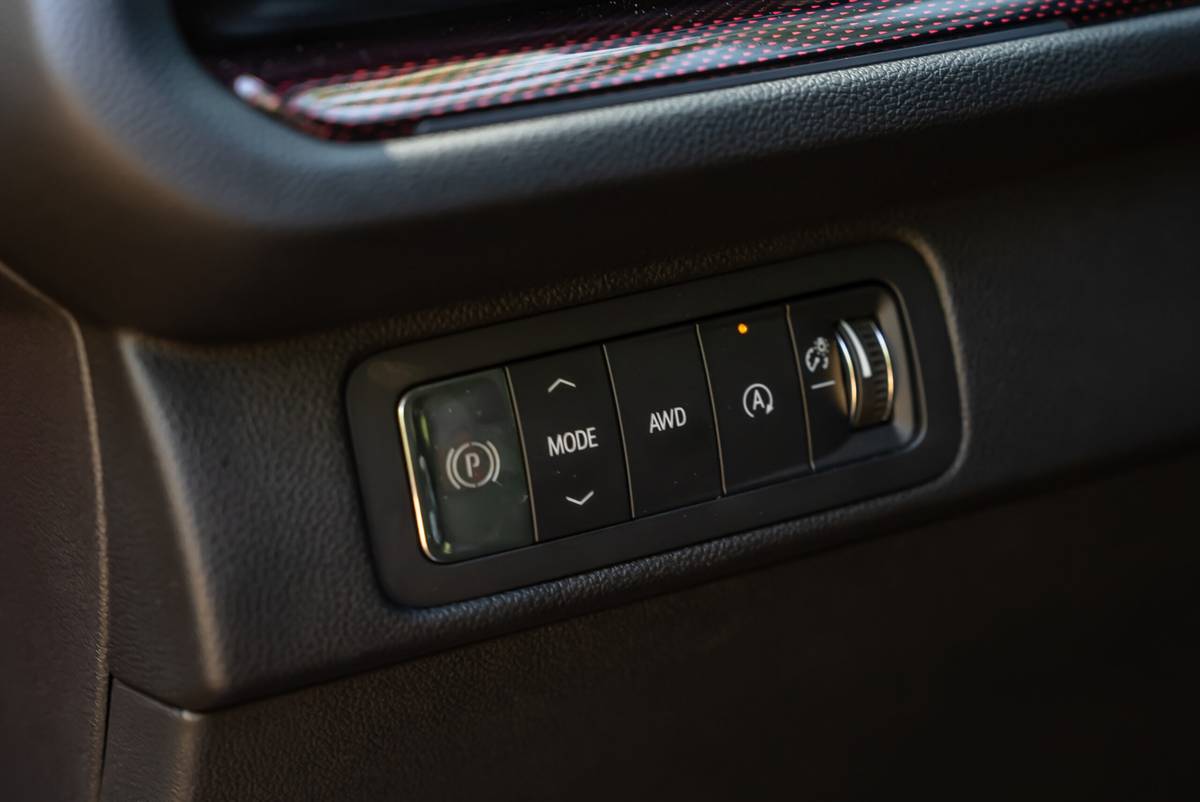
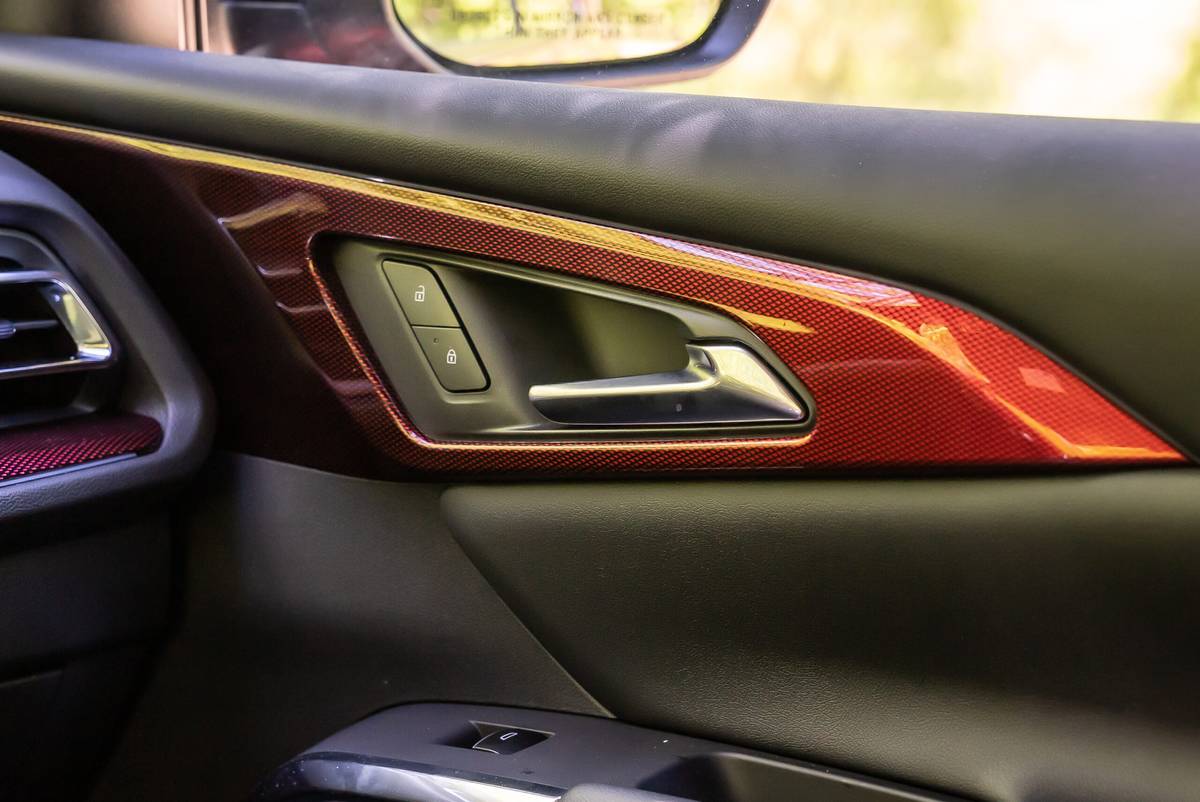
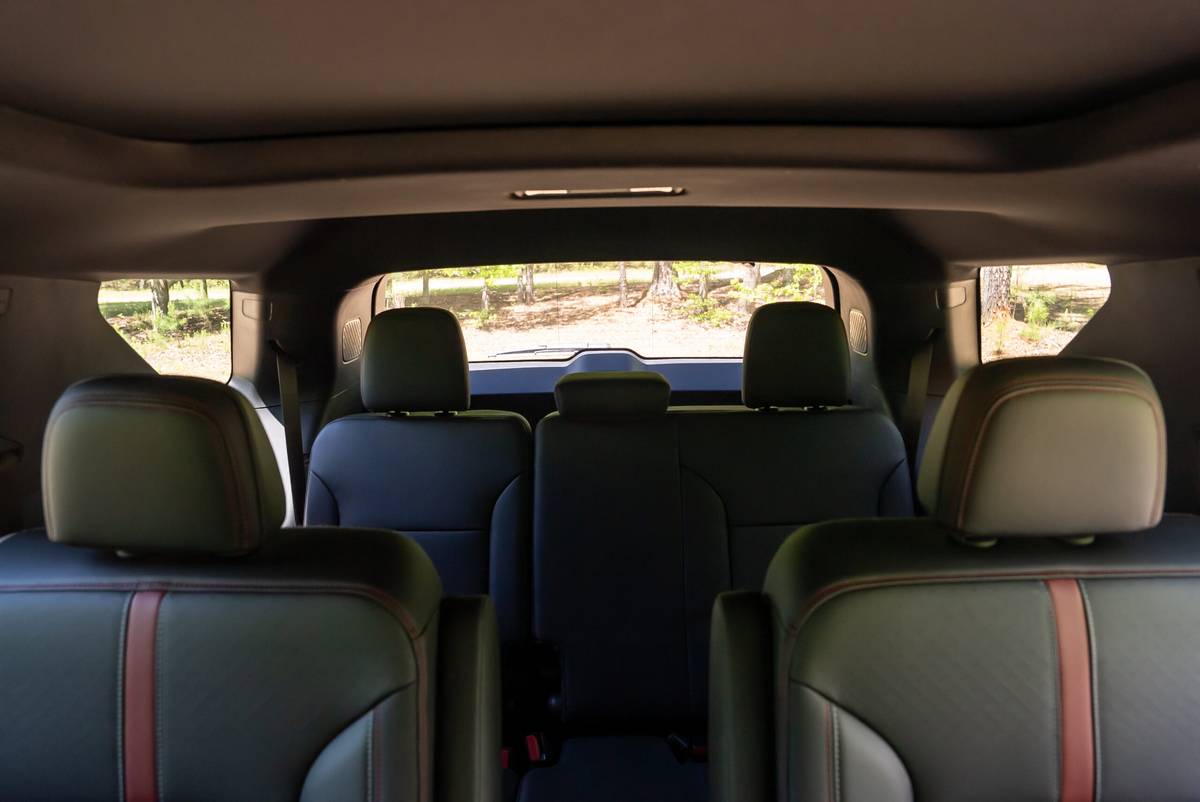
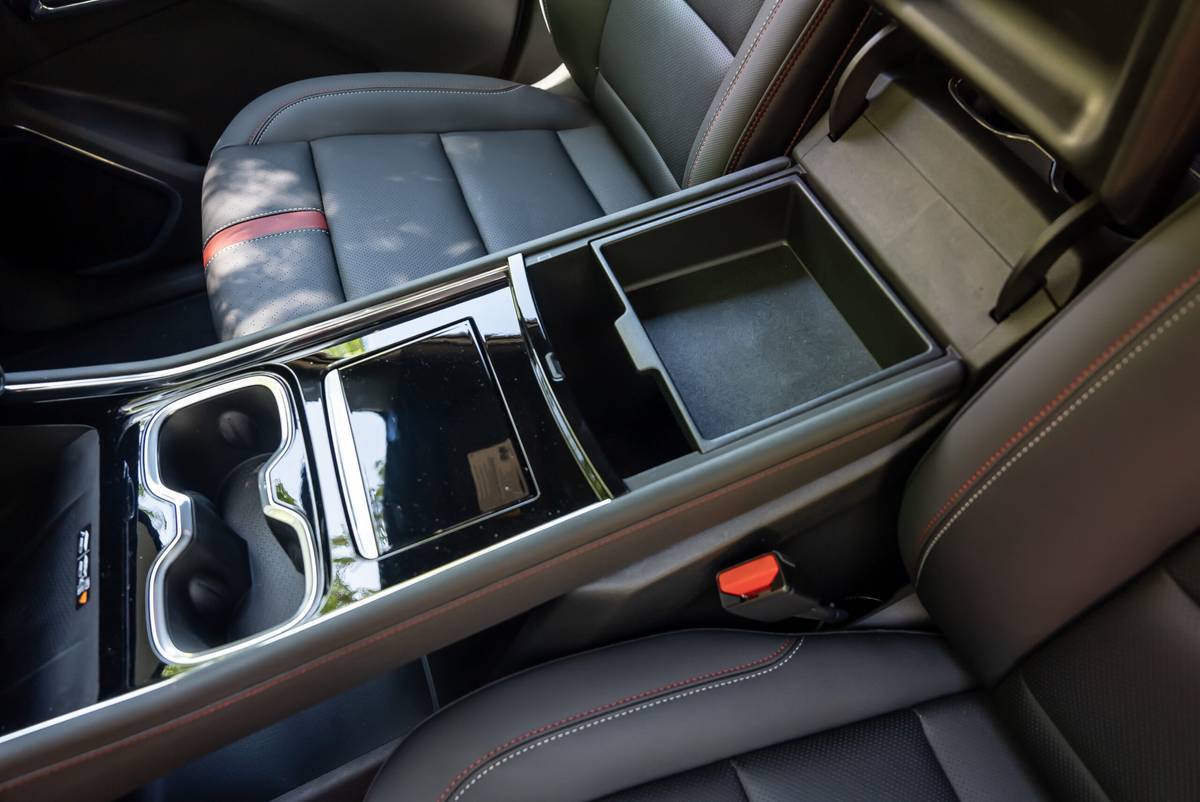

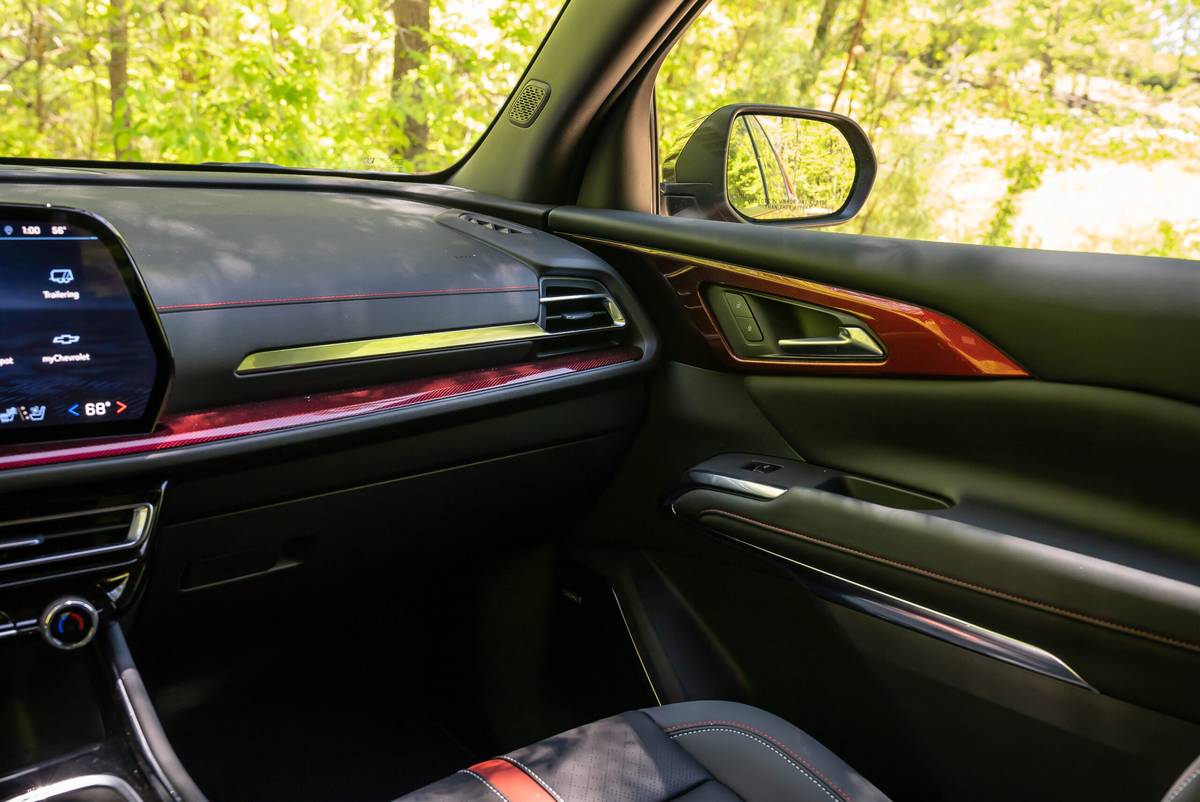

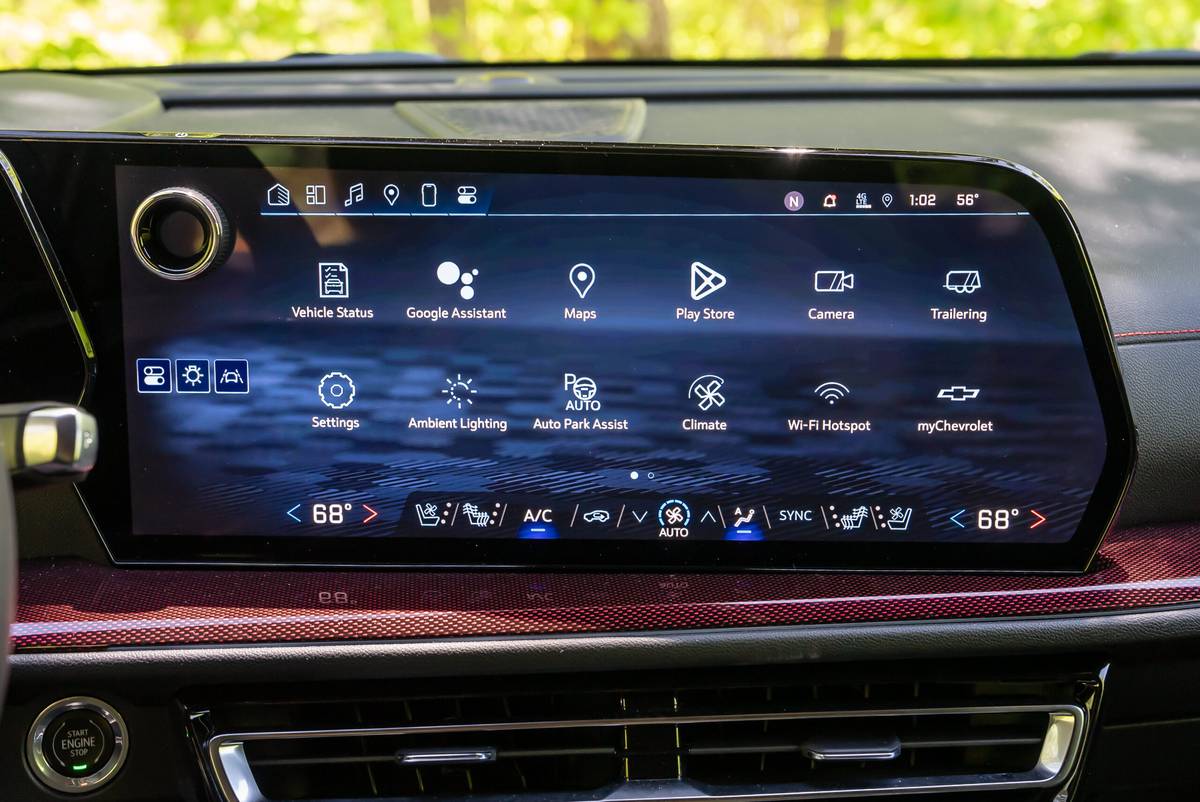

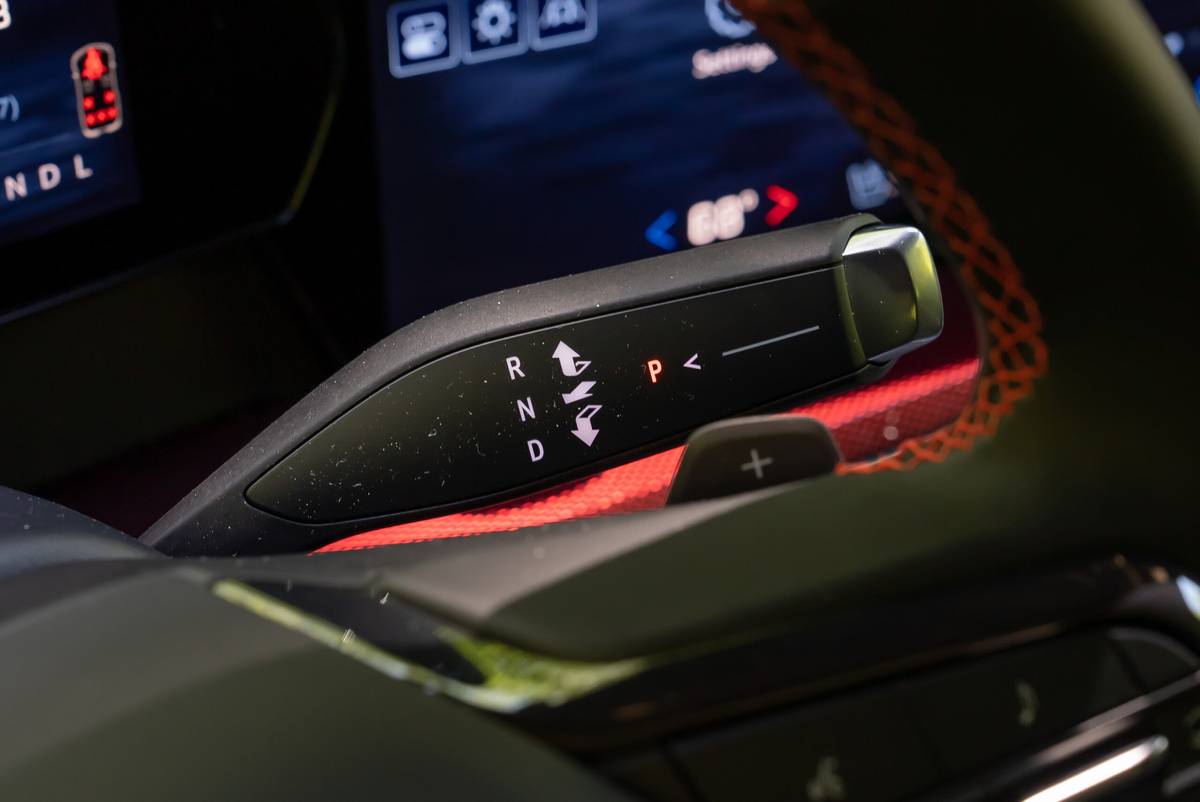
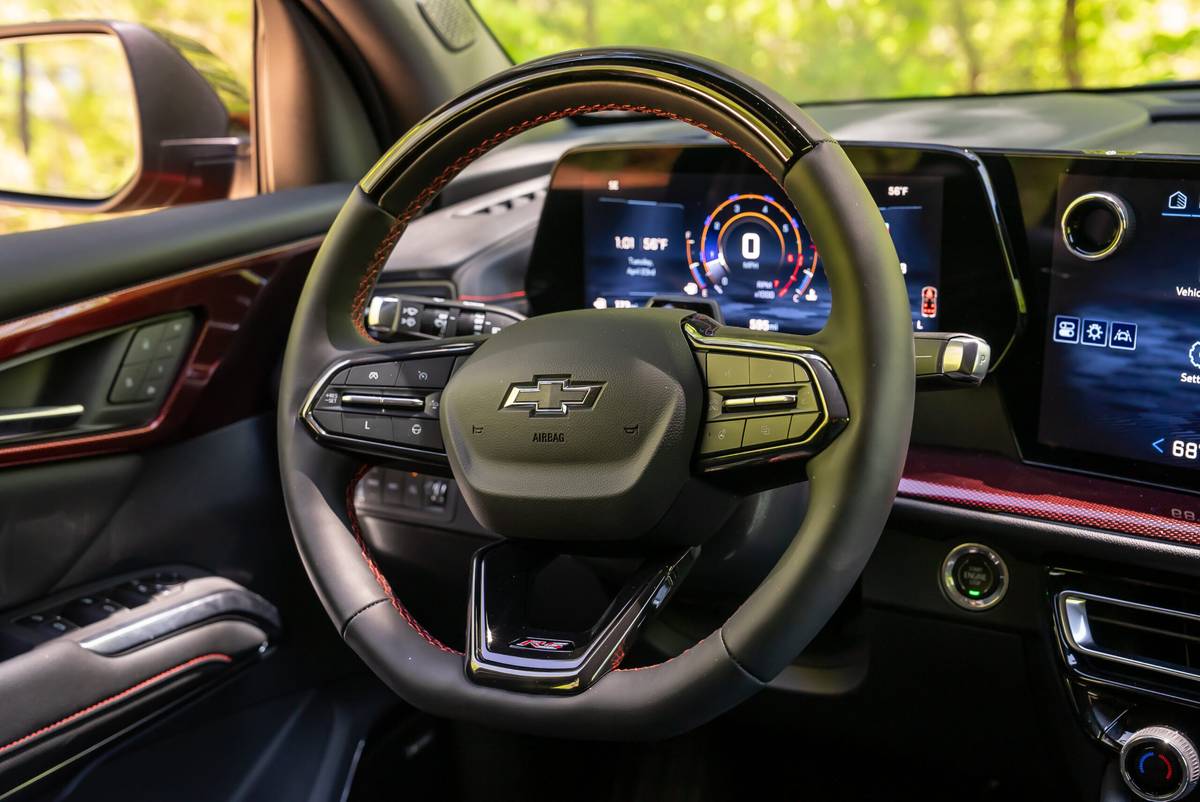

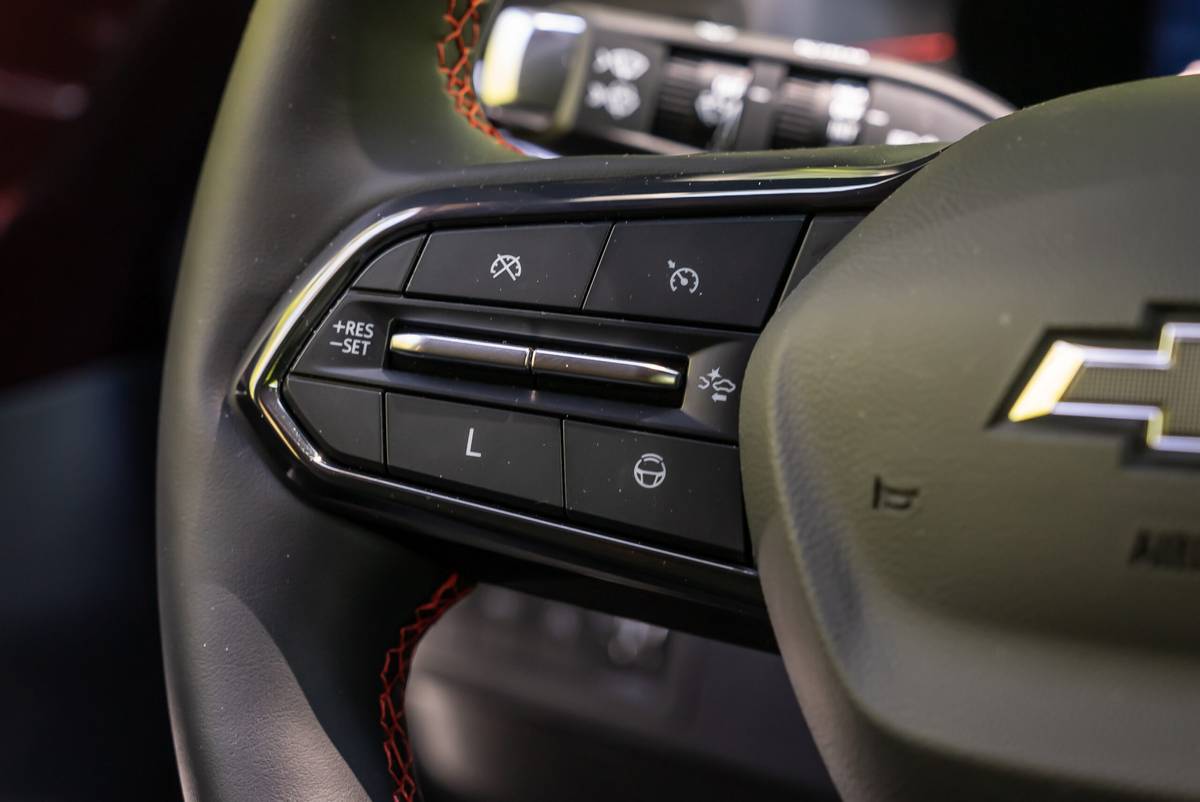

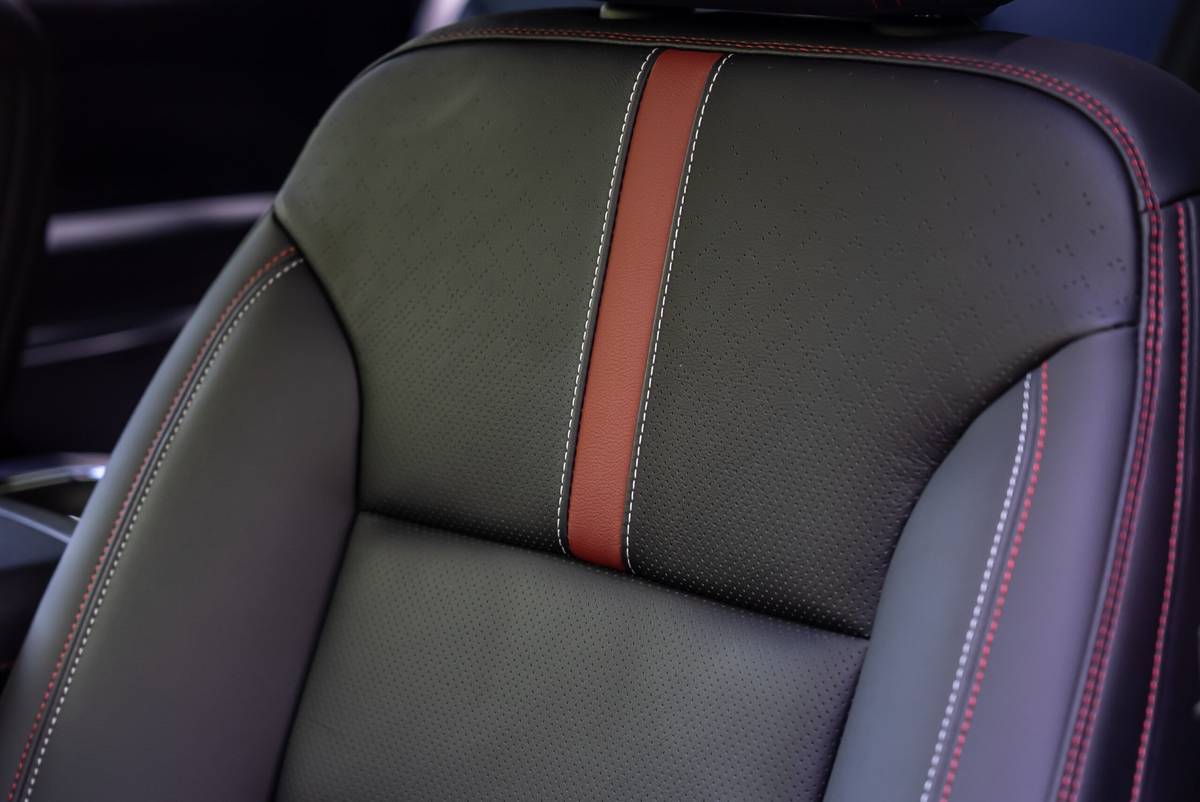
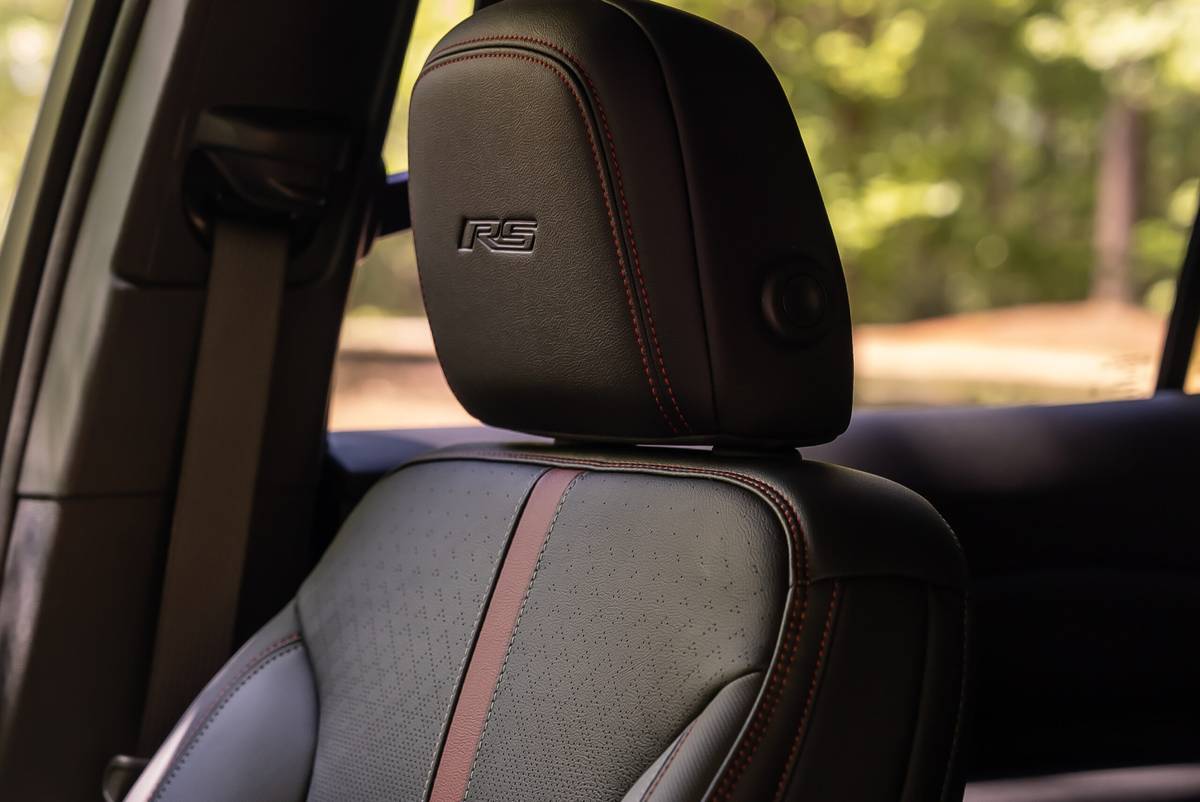
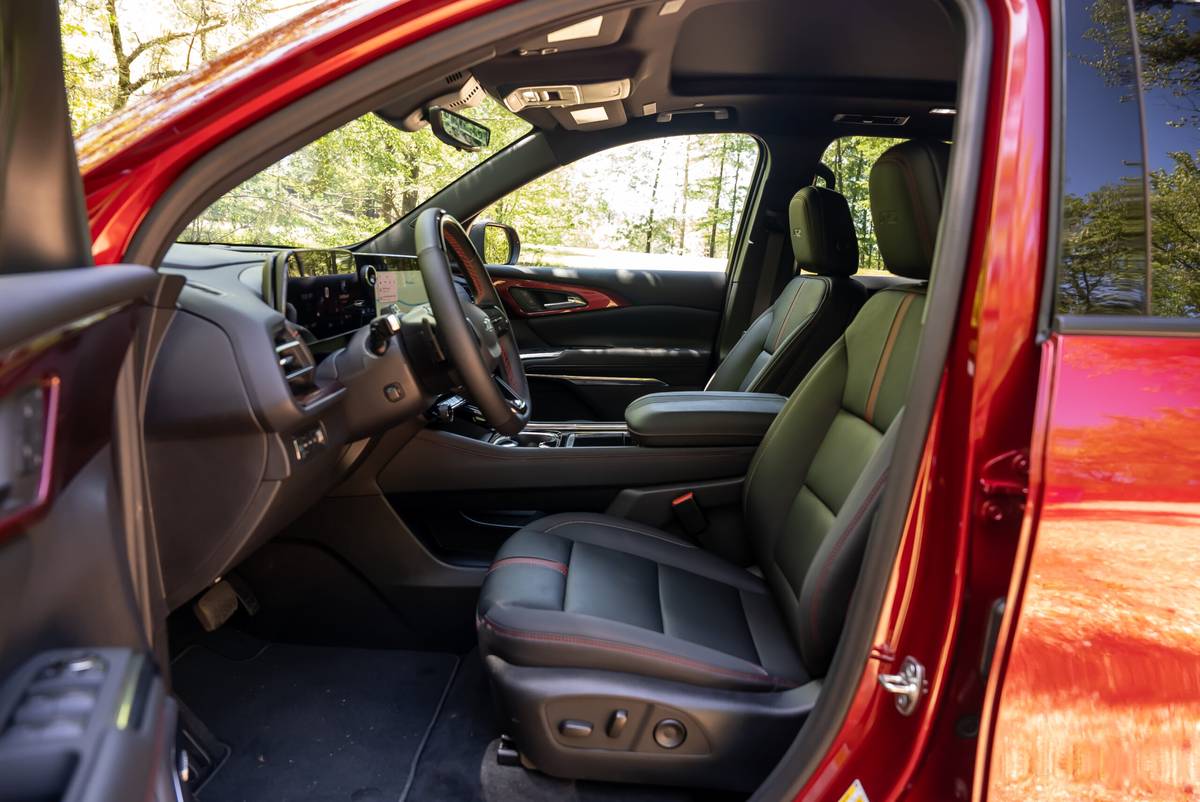
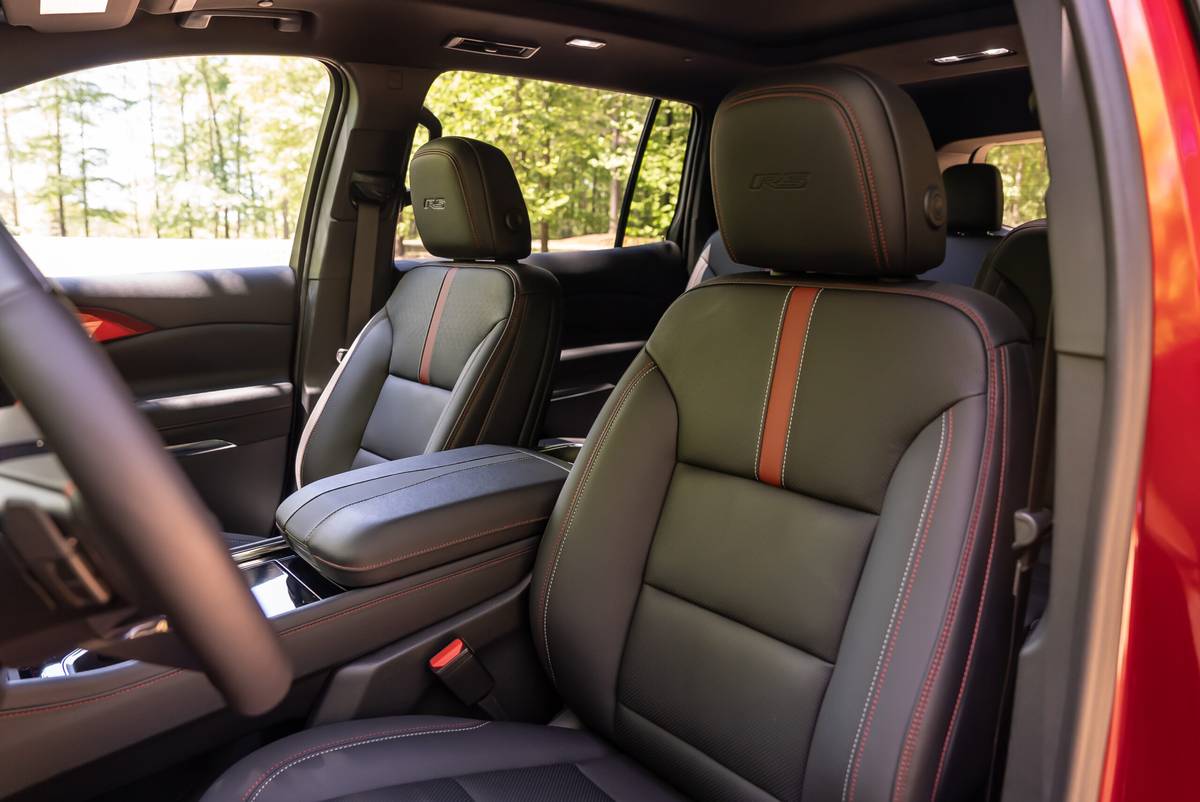
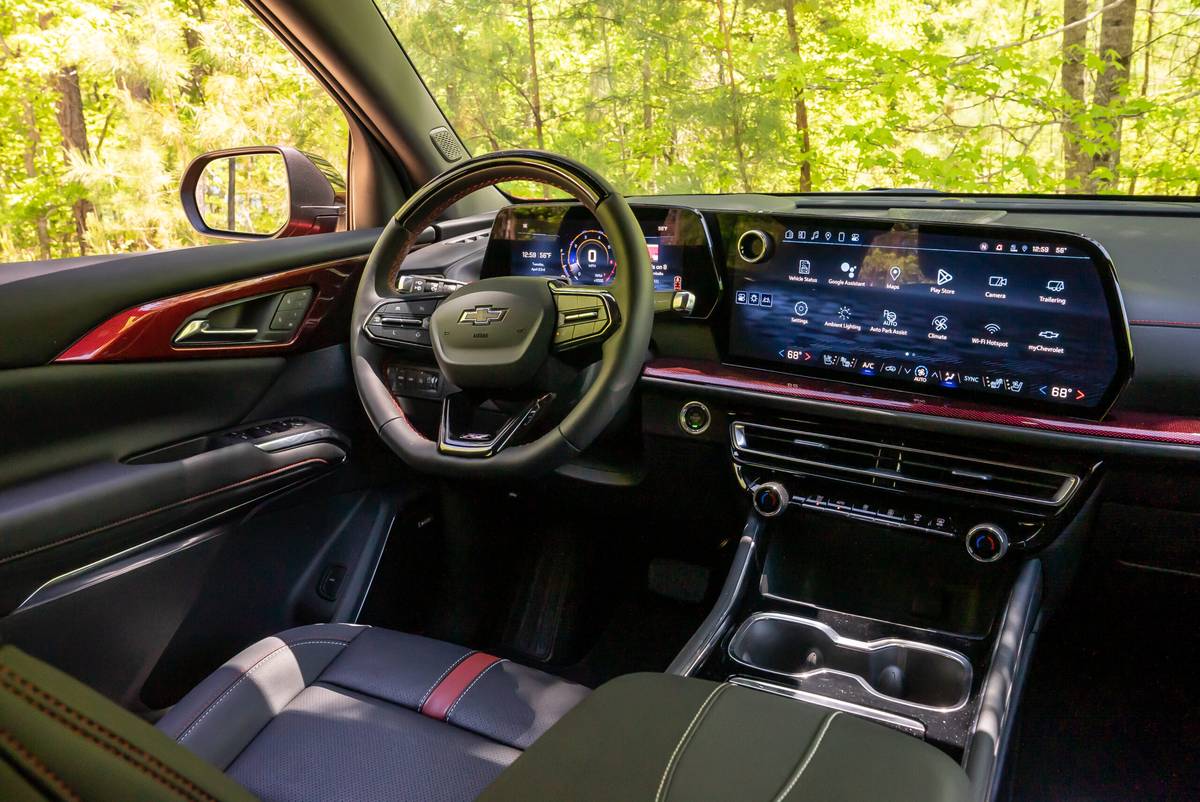




























Competitive Pricing
The new ‘24 Traverse starts around $39,000 and tops out close to $60,000 (prices include destination). This makes the top-end models some of the pricier ones on the market, but the less expensive LS and LT trims that are expected to be the highest-volume models are priced pretty much spot on with where the competition resides. All in all, the Traverse’s strengths of a super smooth ride, spacious and useful cabin, and excellent onboard technology should be a hit with families, while the new Z71 trim’s butch looks and genuine capability add to the SUV’s appeal.


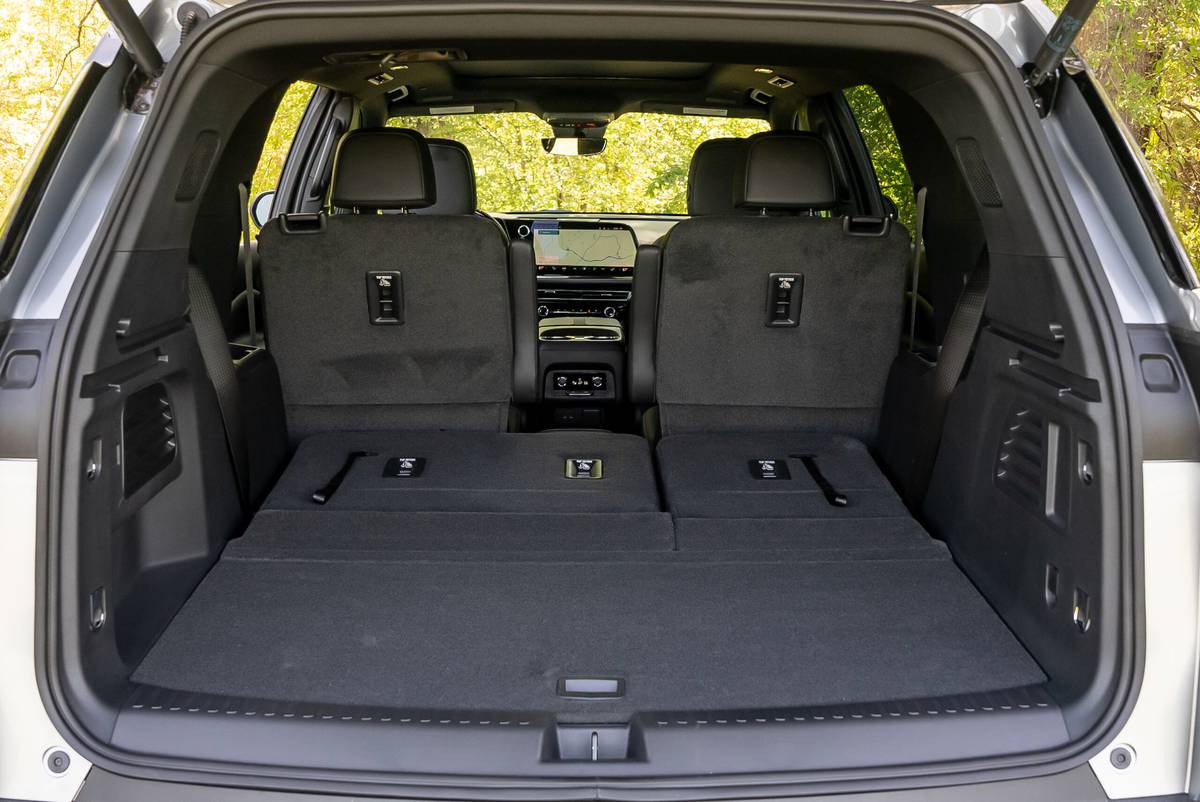
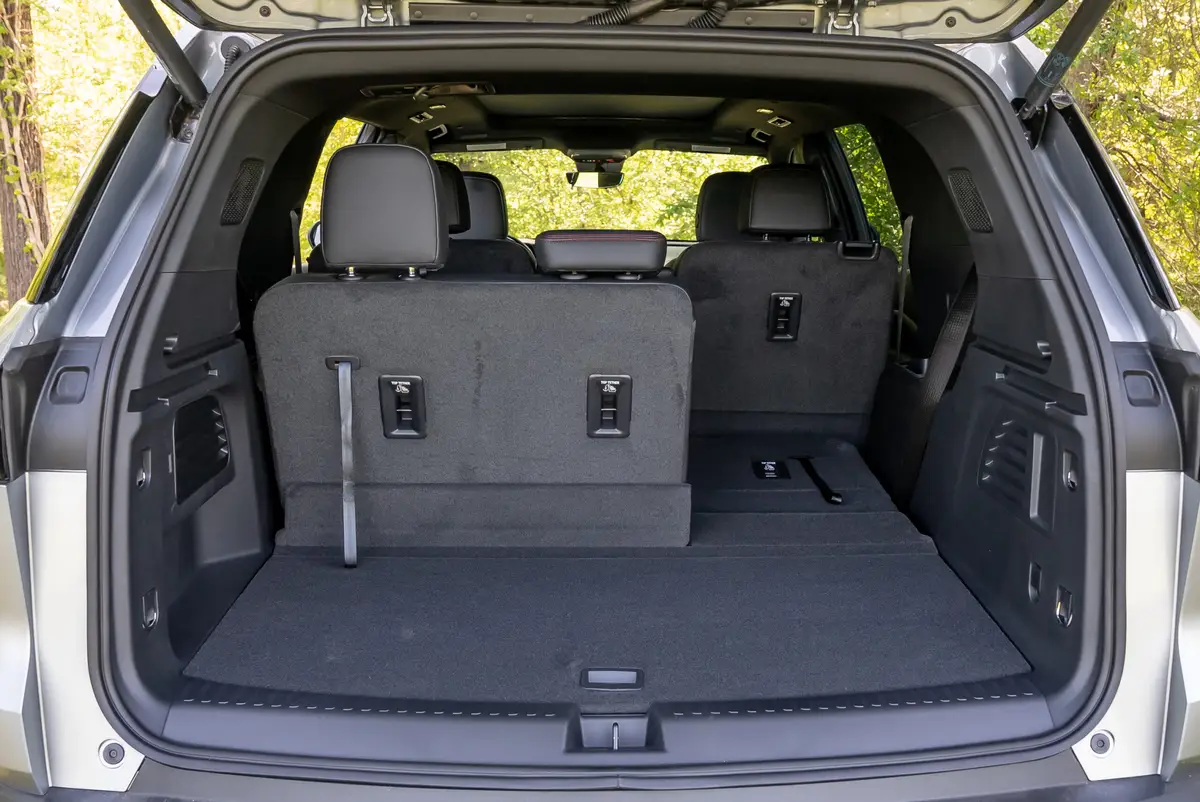
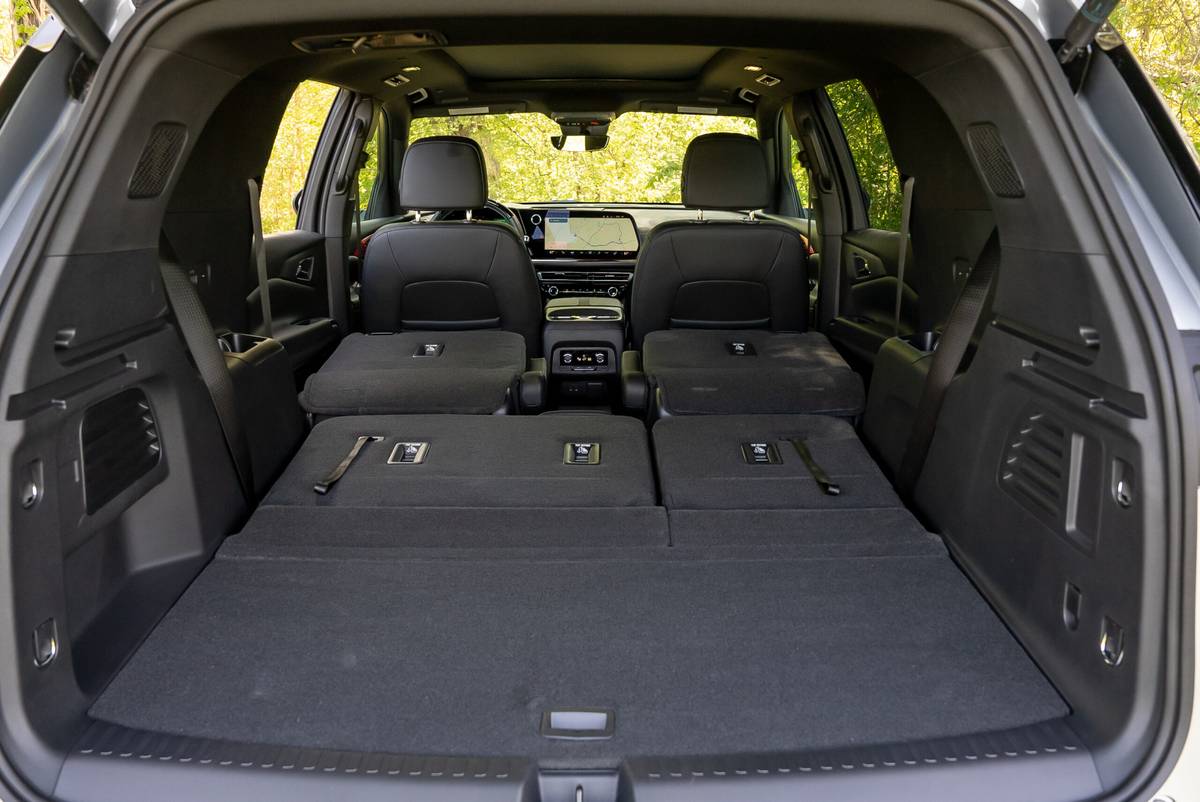
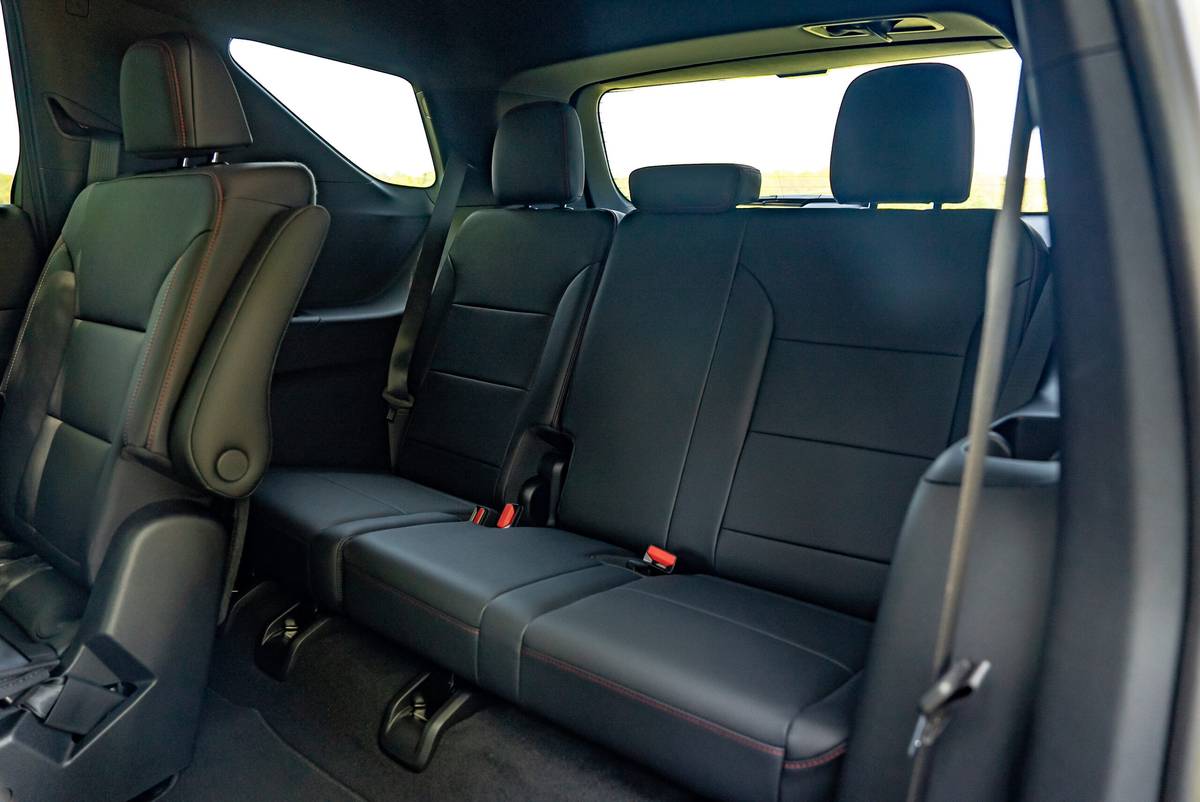






Cars.com’s Editorial department is your source for automotive news and reviews. In line with Cars.com’s long-standing ethics policy, editors and reviewers don’t accept gifts or free trips from automakers. The Editorial department is independent of Cars.com’s advertising, sales and sponsored content departments.

Detroit Bureau Chief Aaron Bragman has had over 25 years of experience in the auto industry as a journalist, analyst, purchasing agent and program manager. Bragman grew up around his father’s classic Triumph sports cars (which were all sold and gone when he turned 16, much to his frustration) and comes from a Detroit family where cars put food on tables as much as smiles on faces. Today, he’s a member of the Automotive Press Association and the Midwest Automotive Media Association. His pronouns are he/him, but his adjectives are fat/sassy.
Latest news
